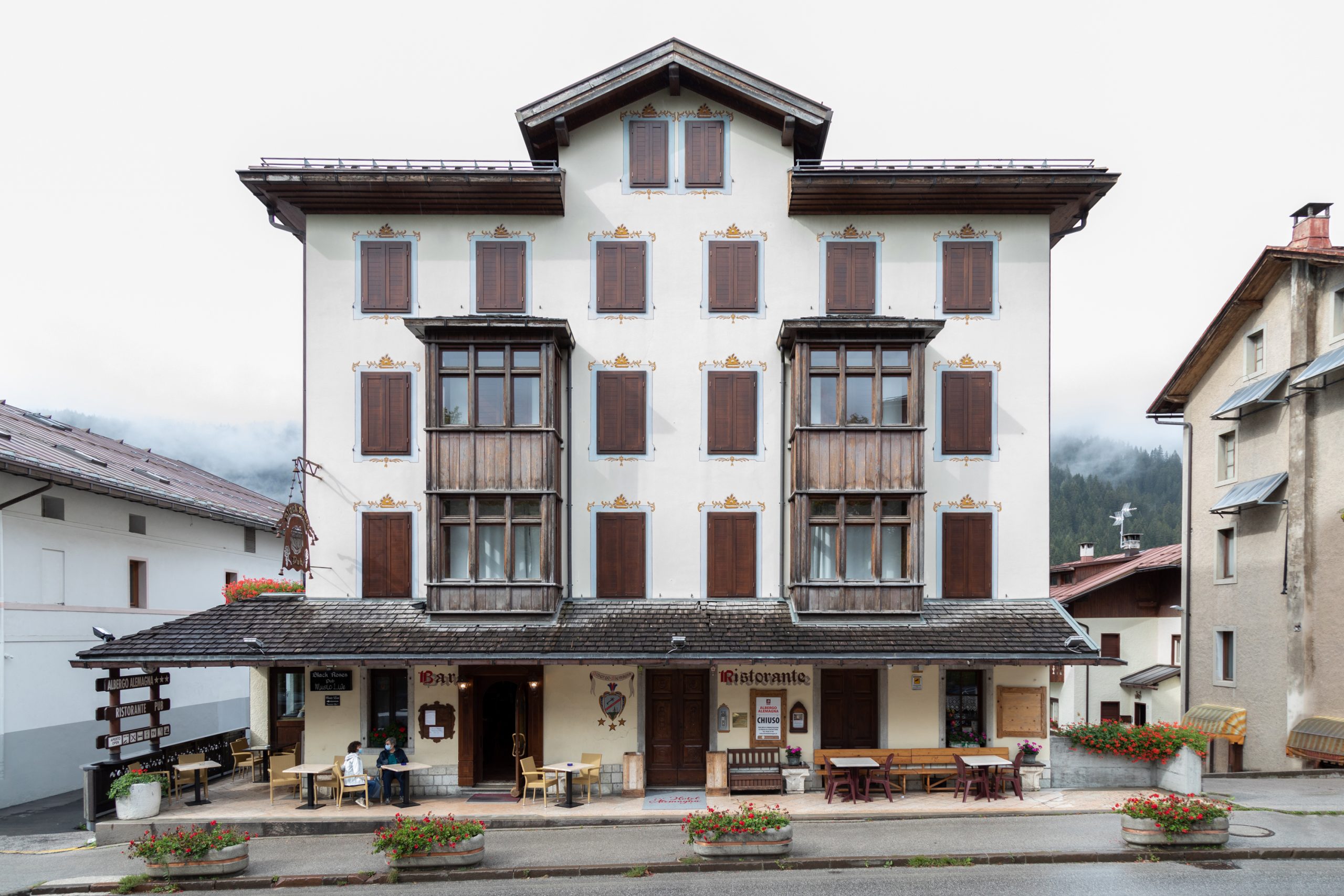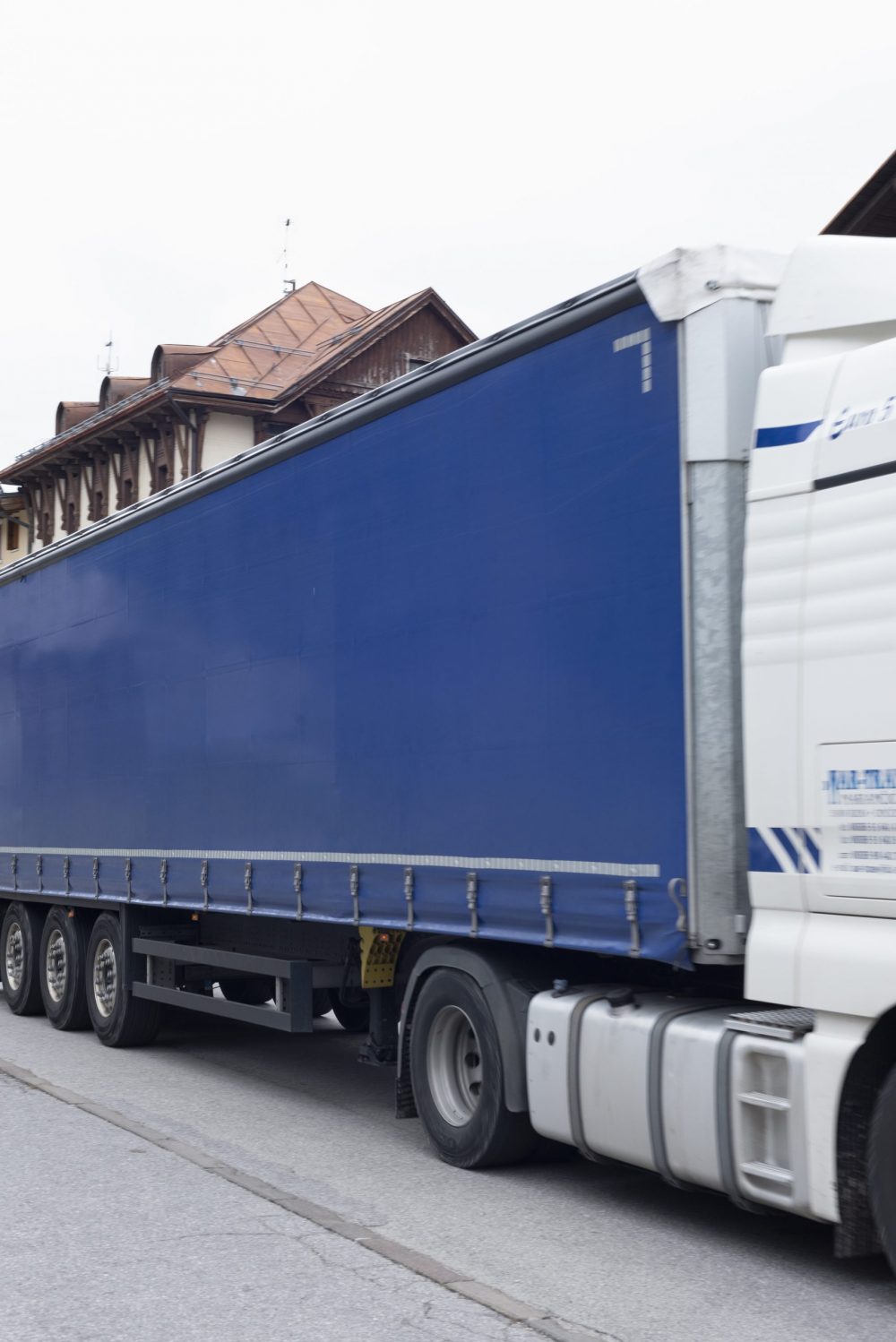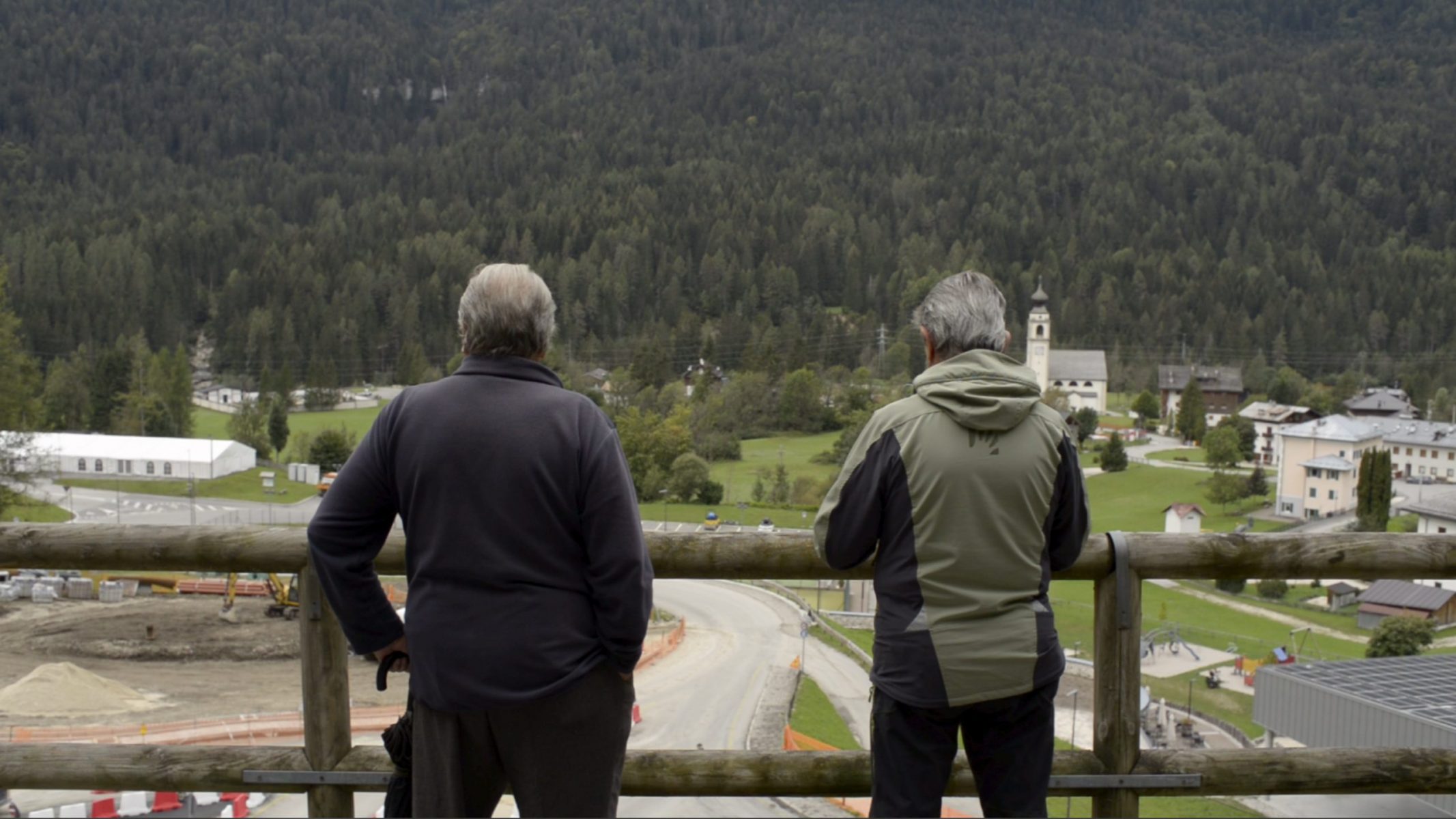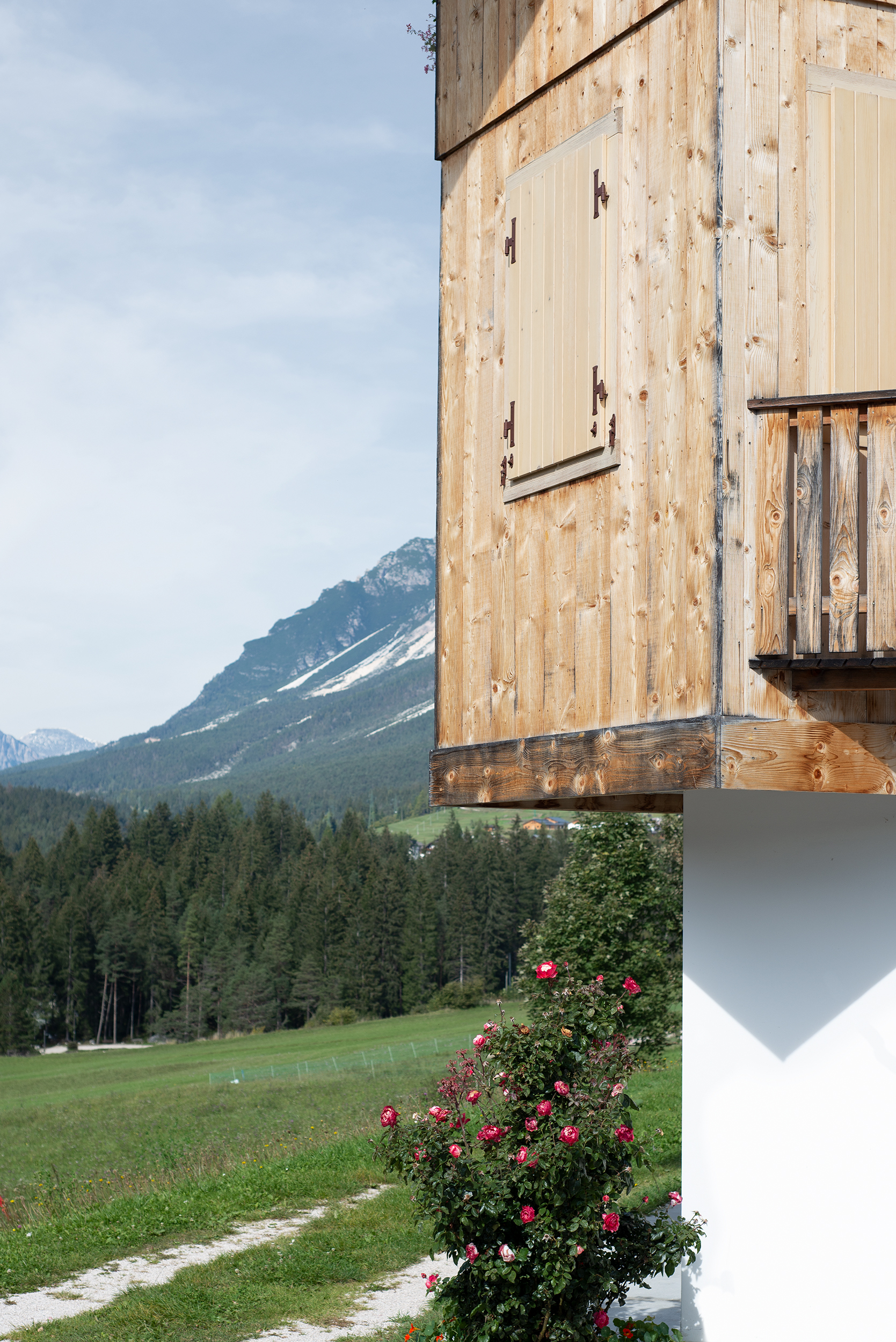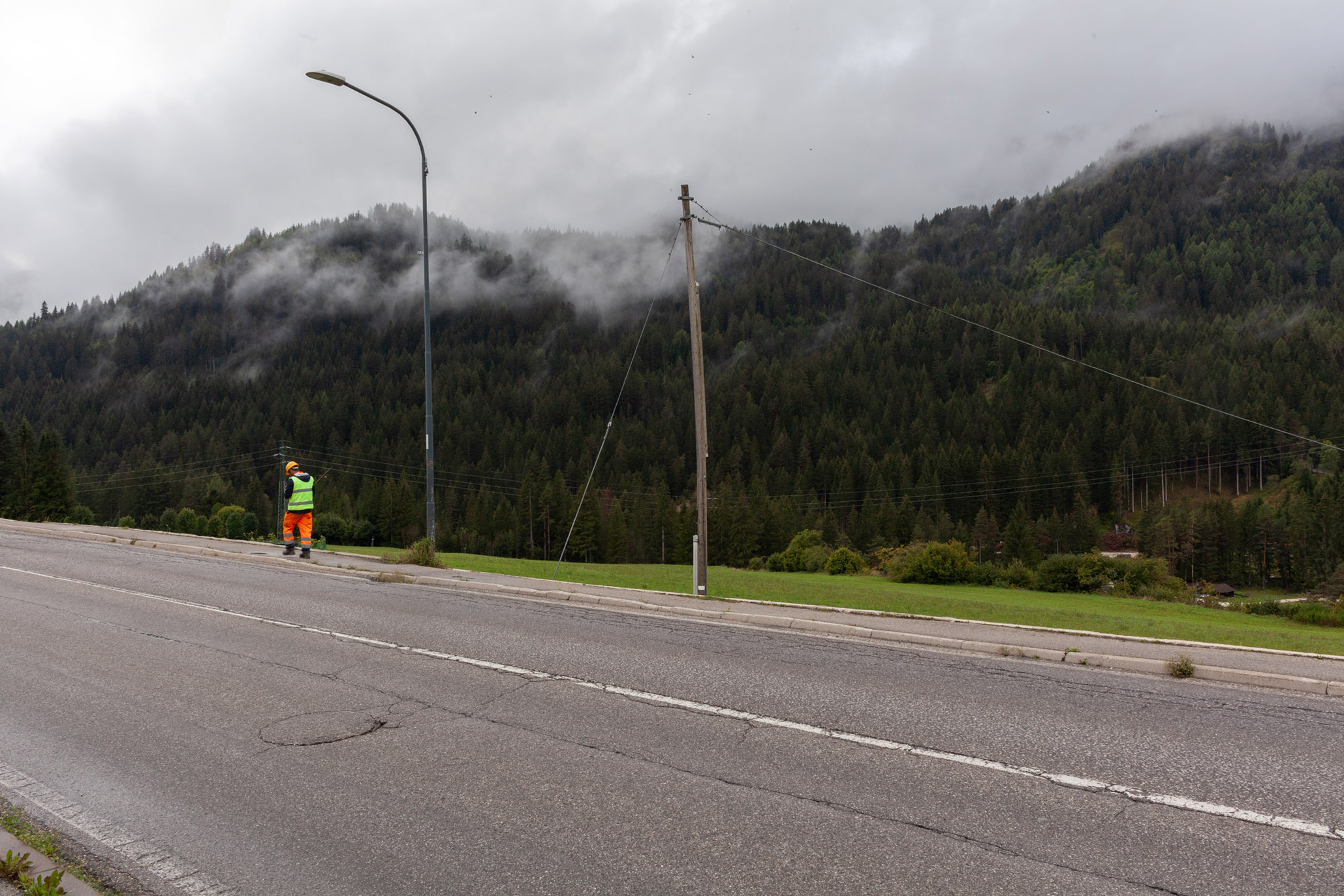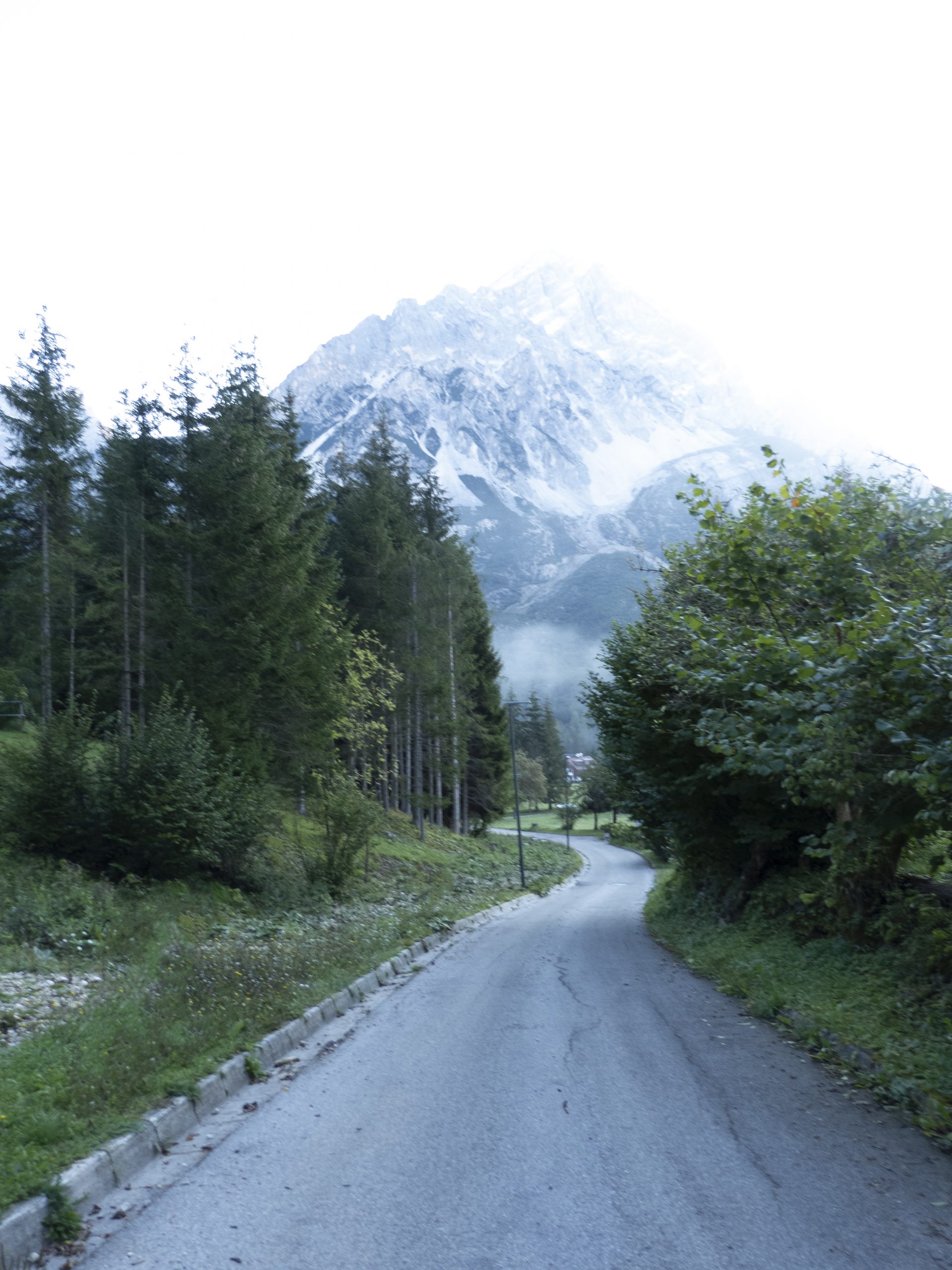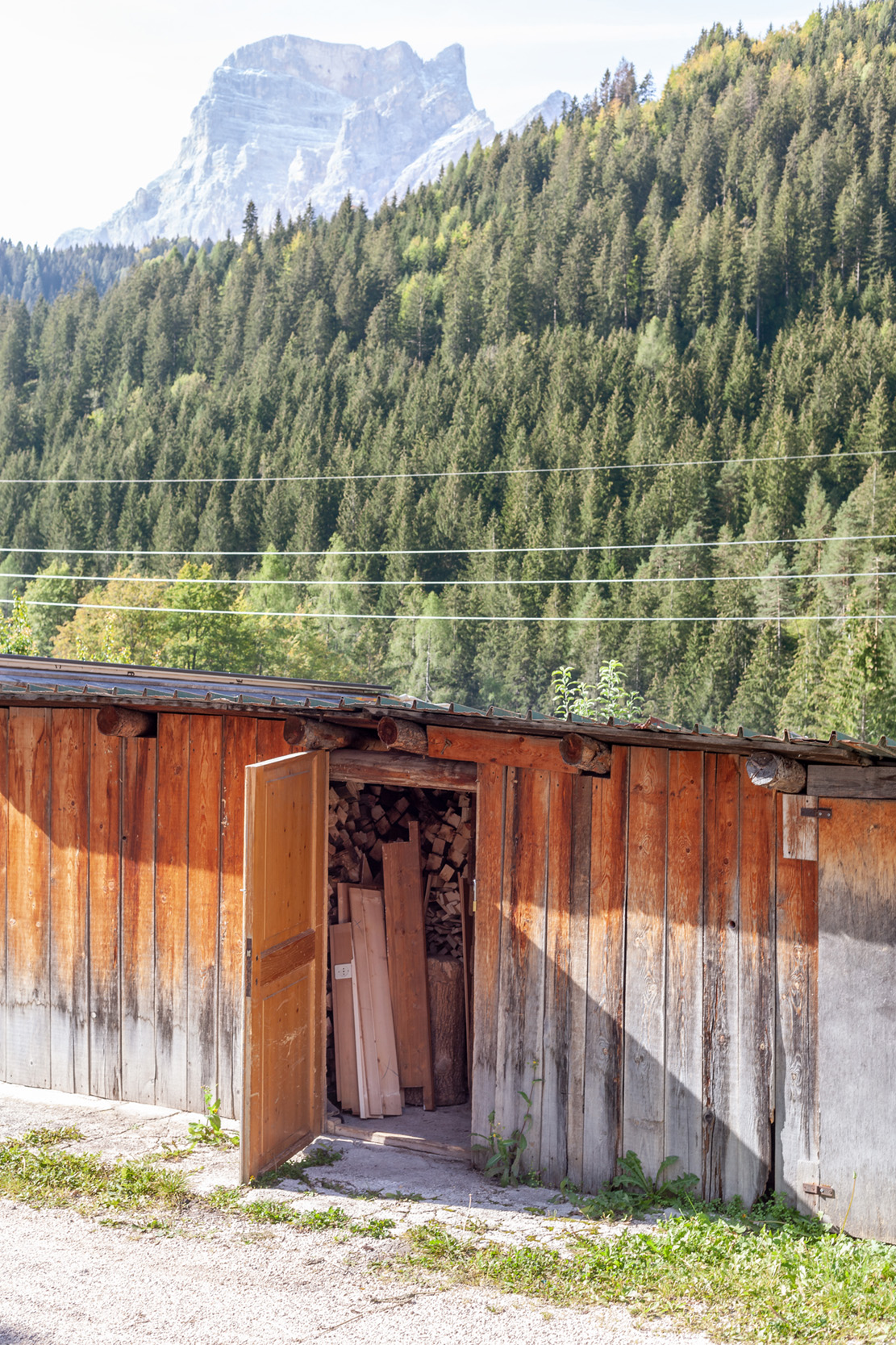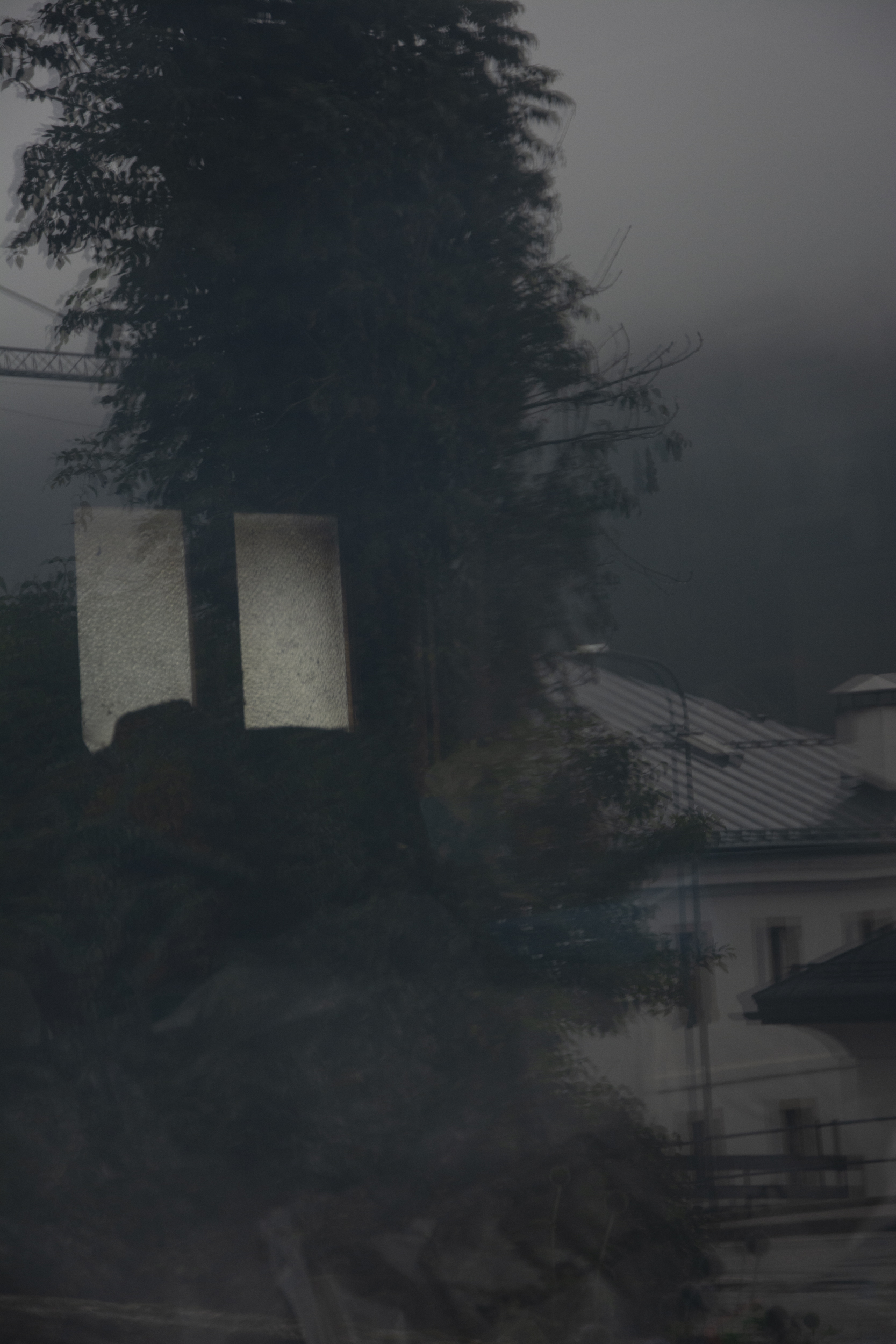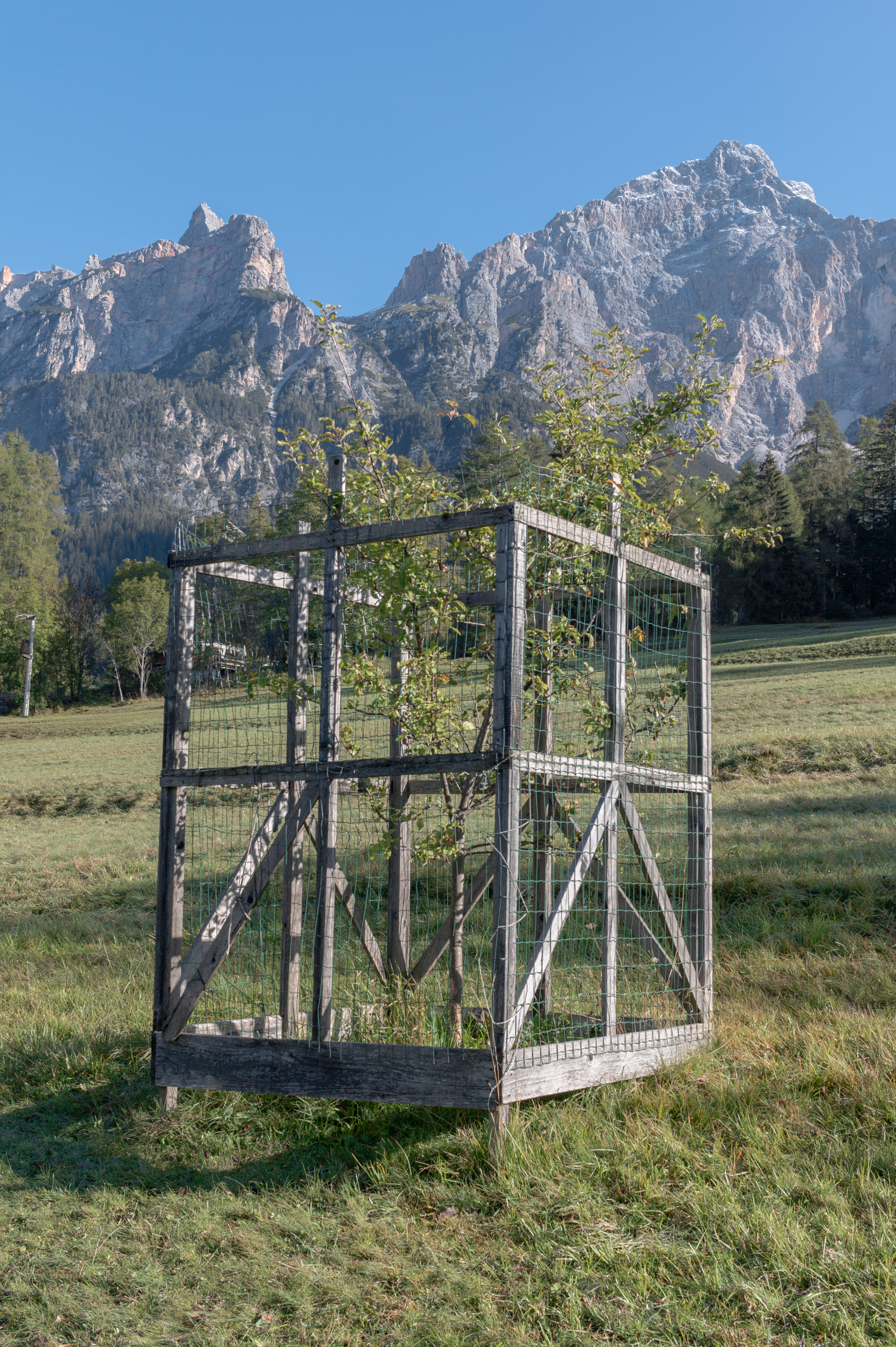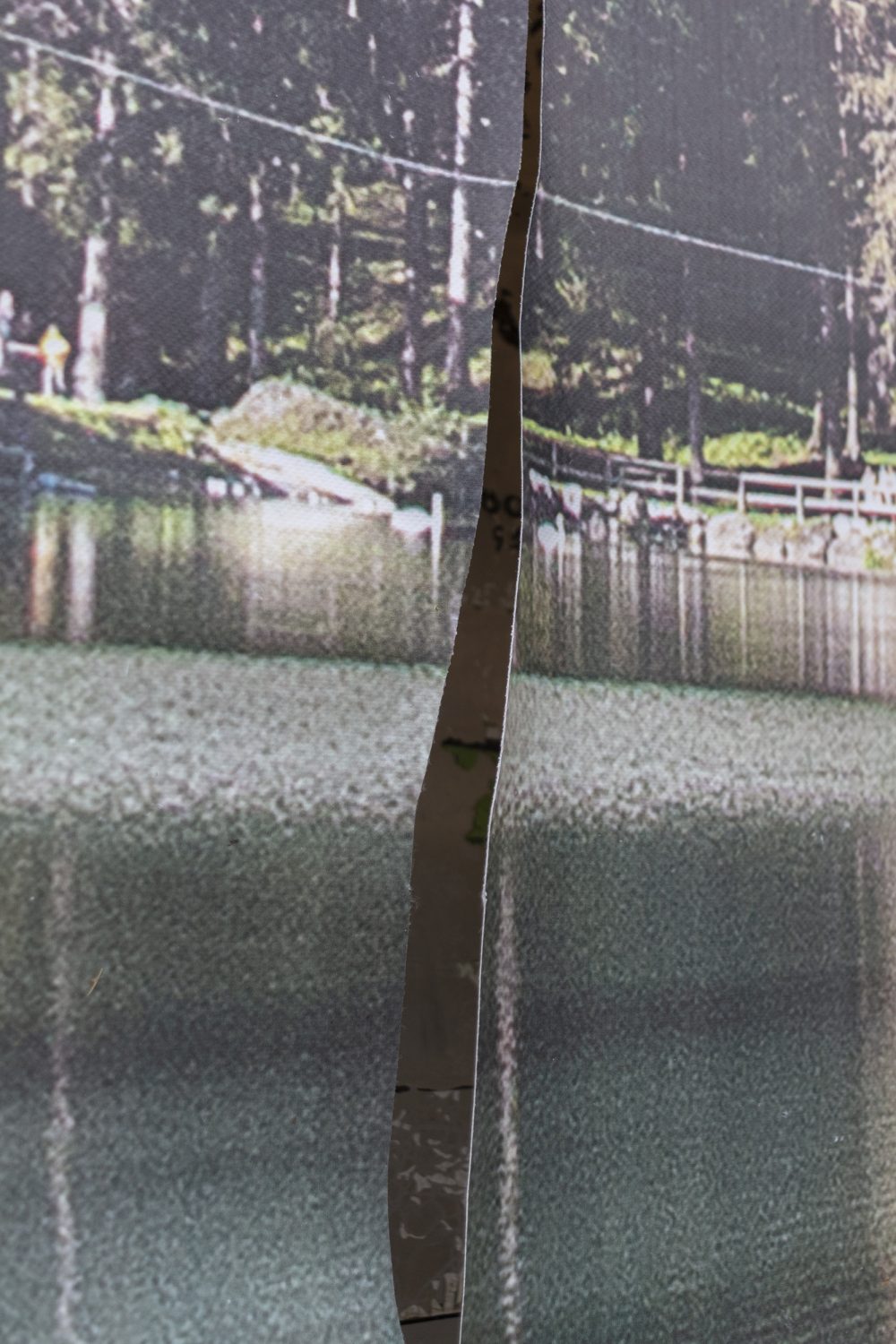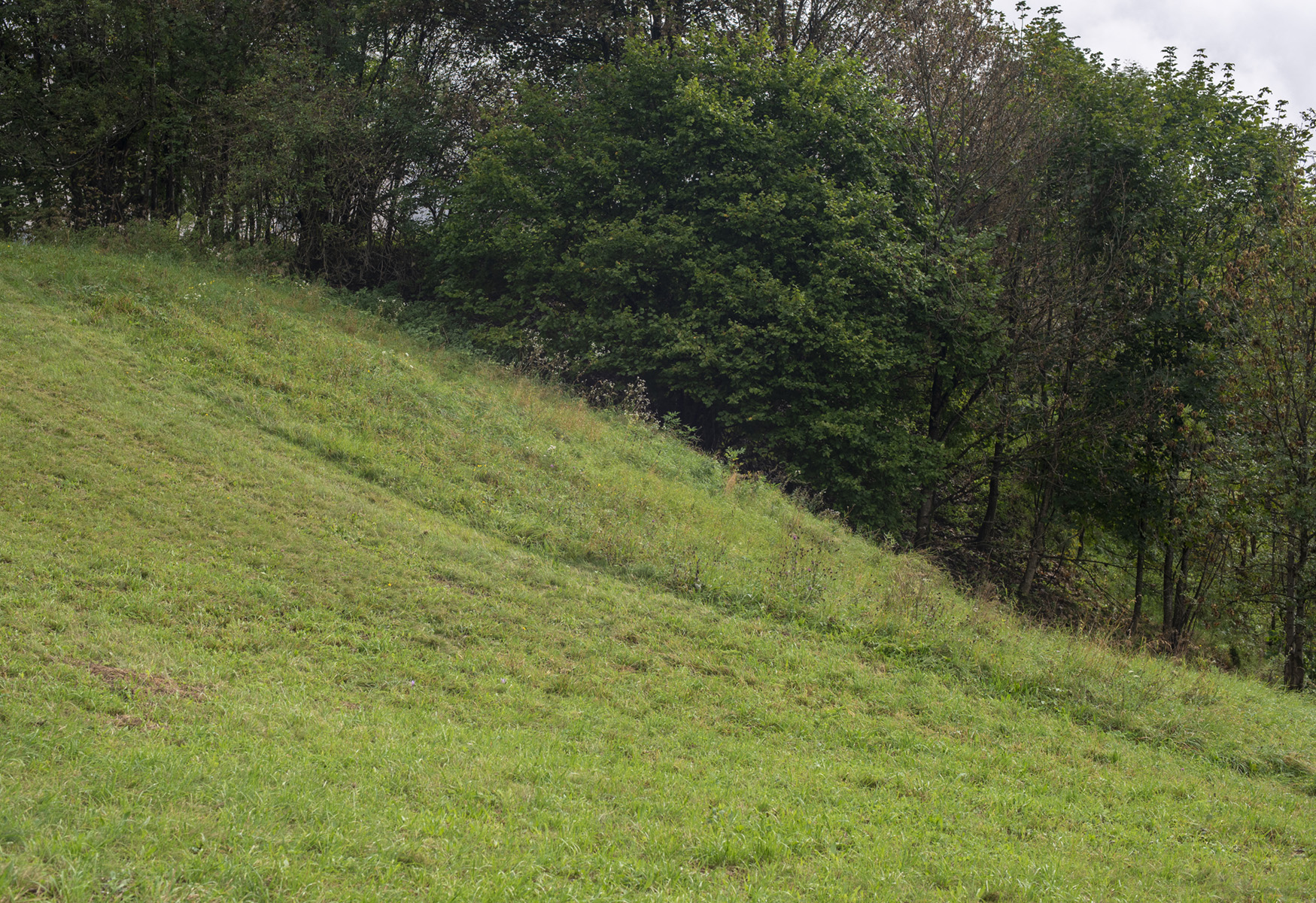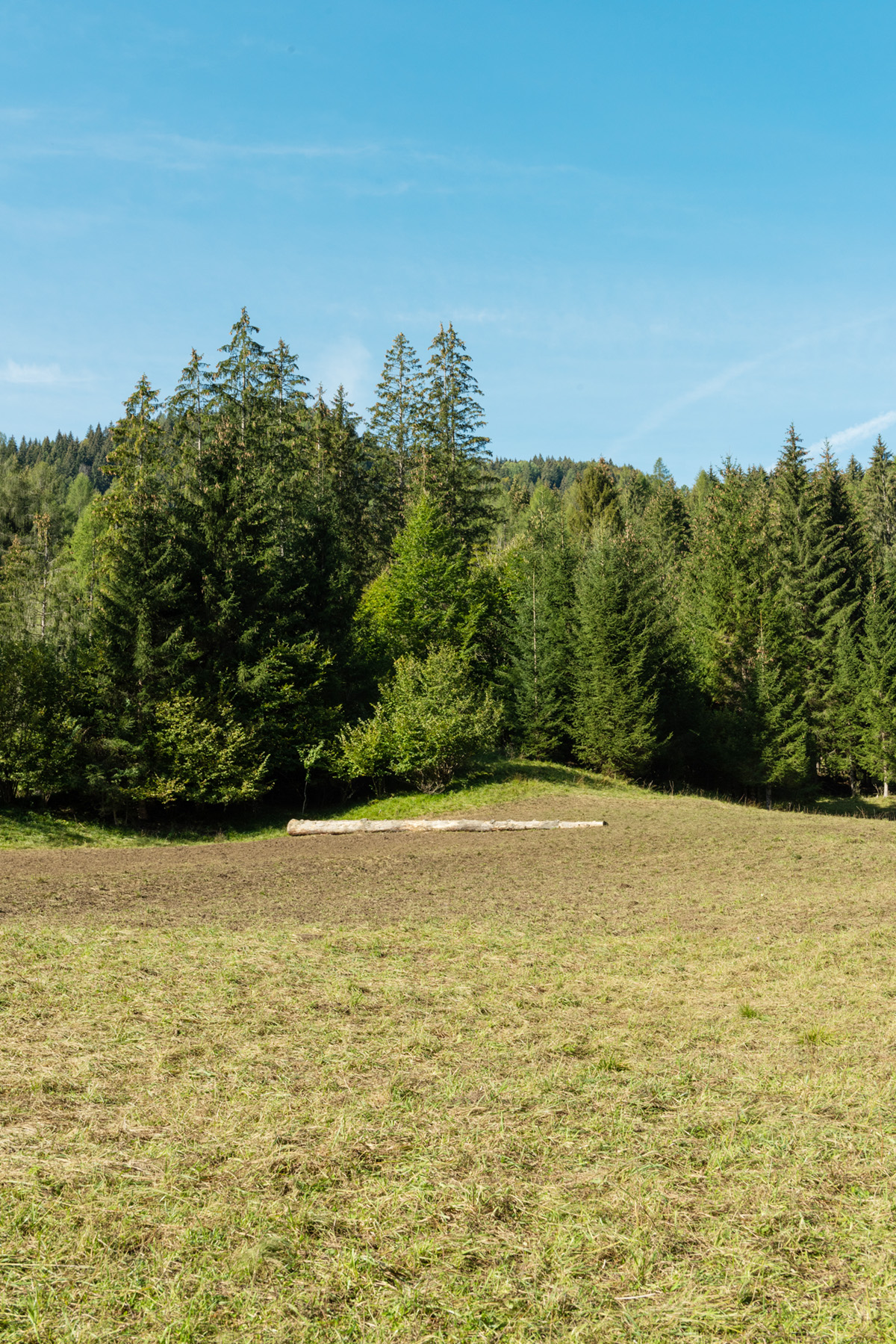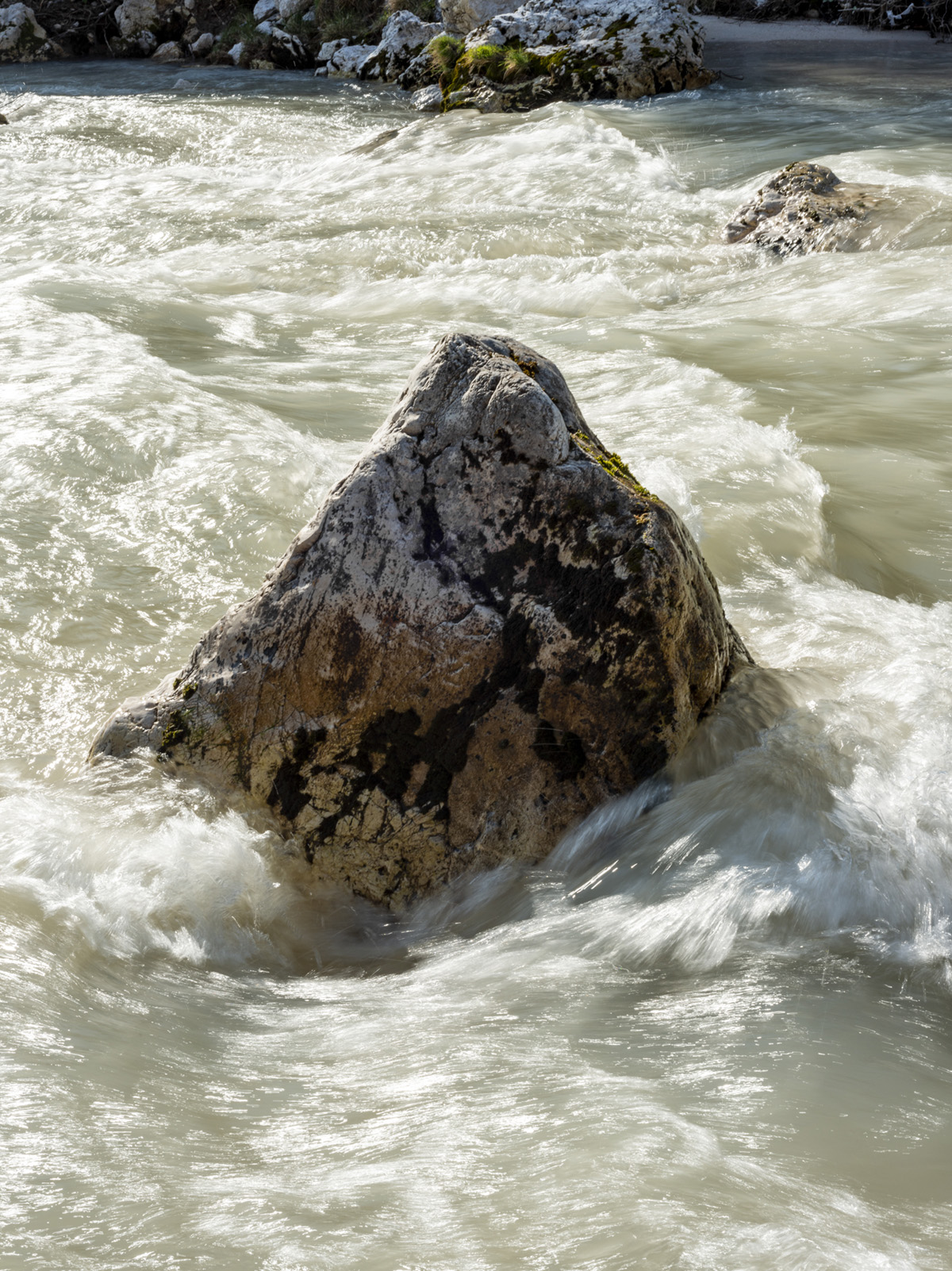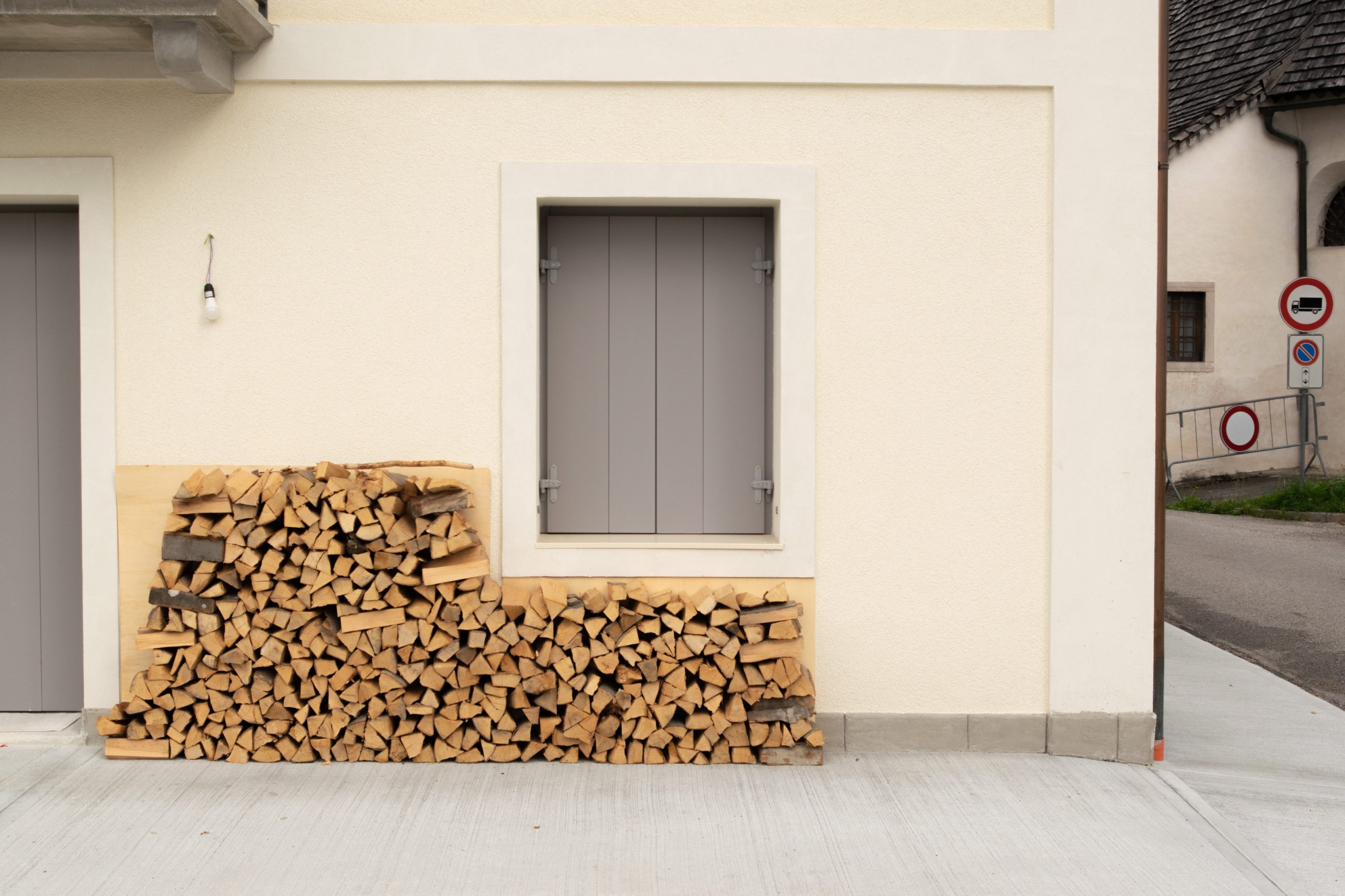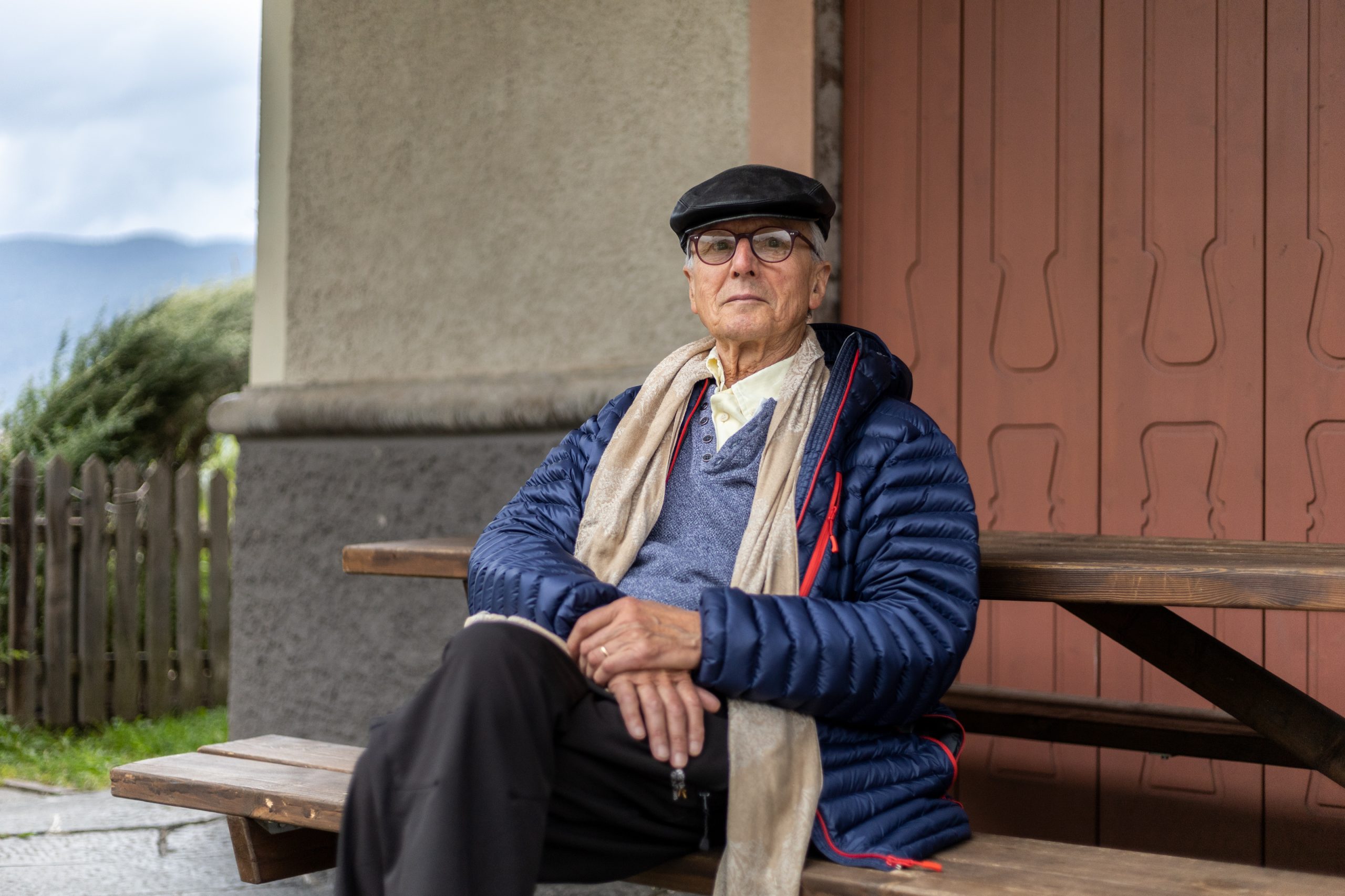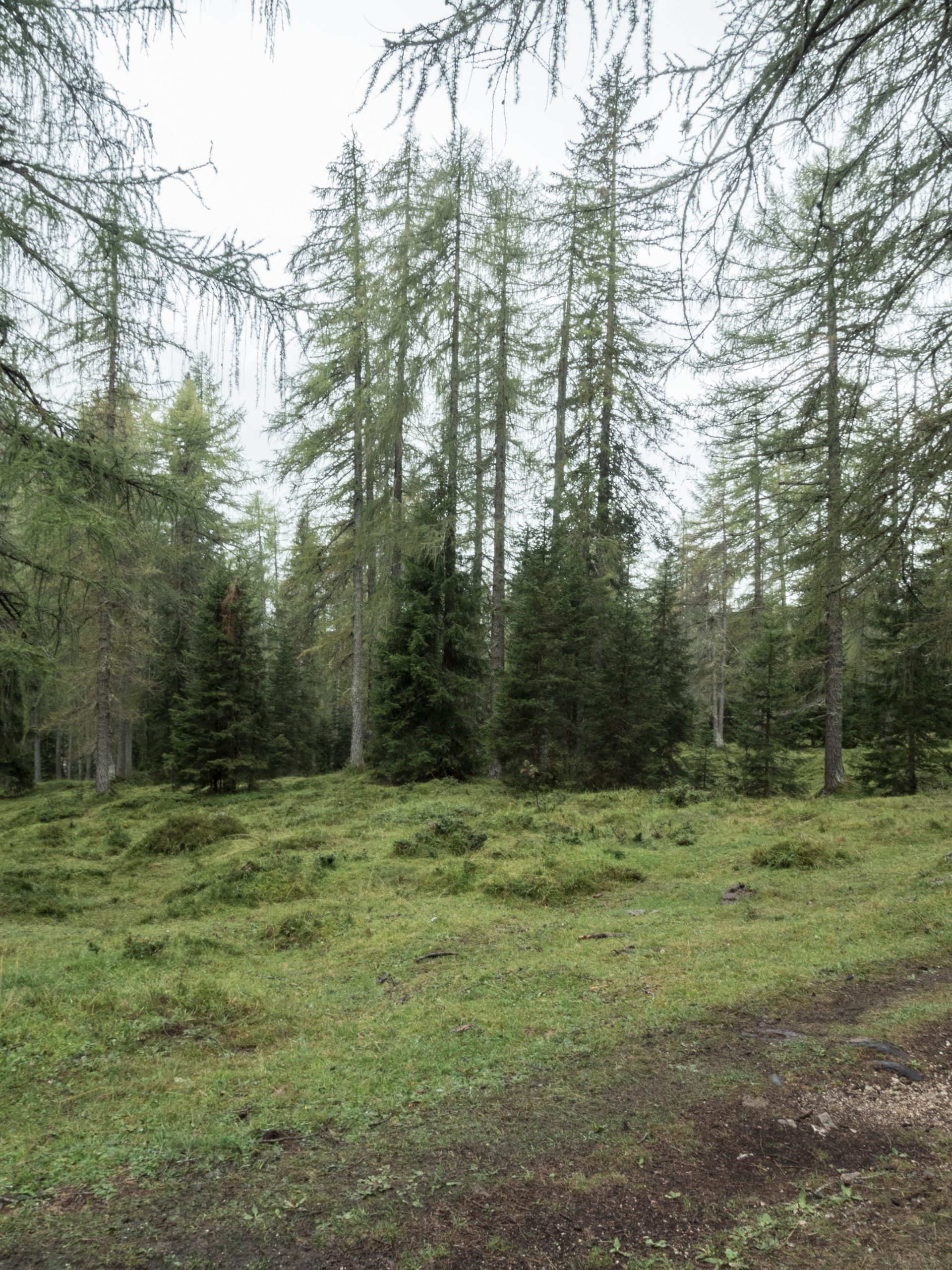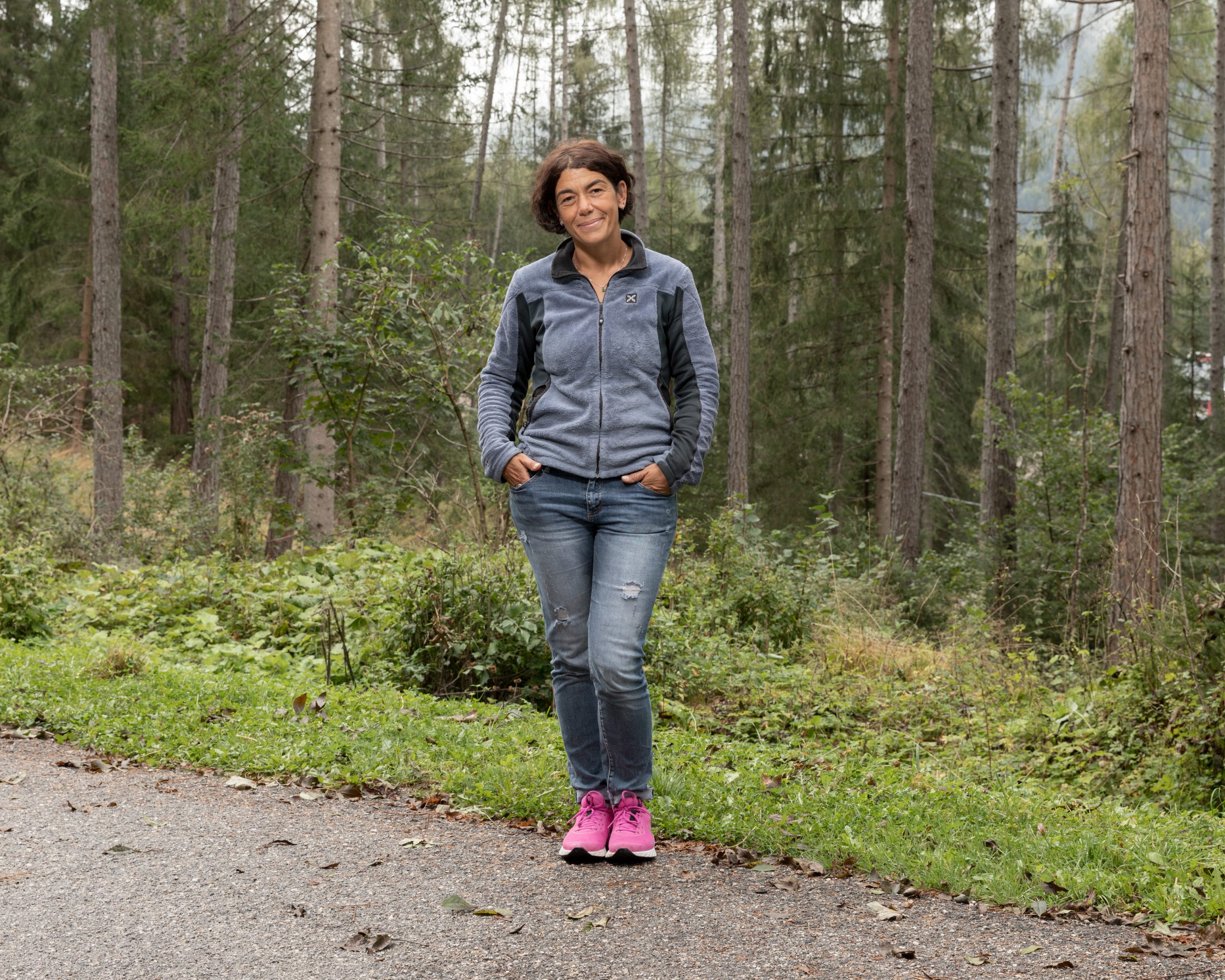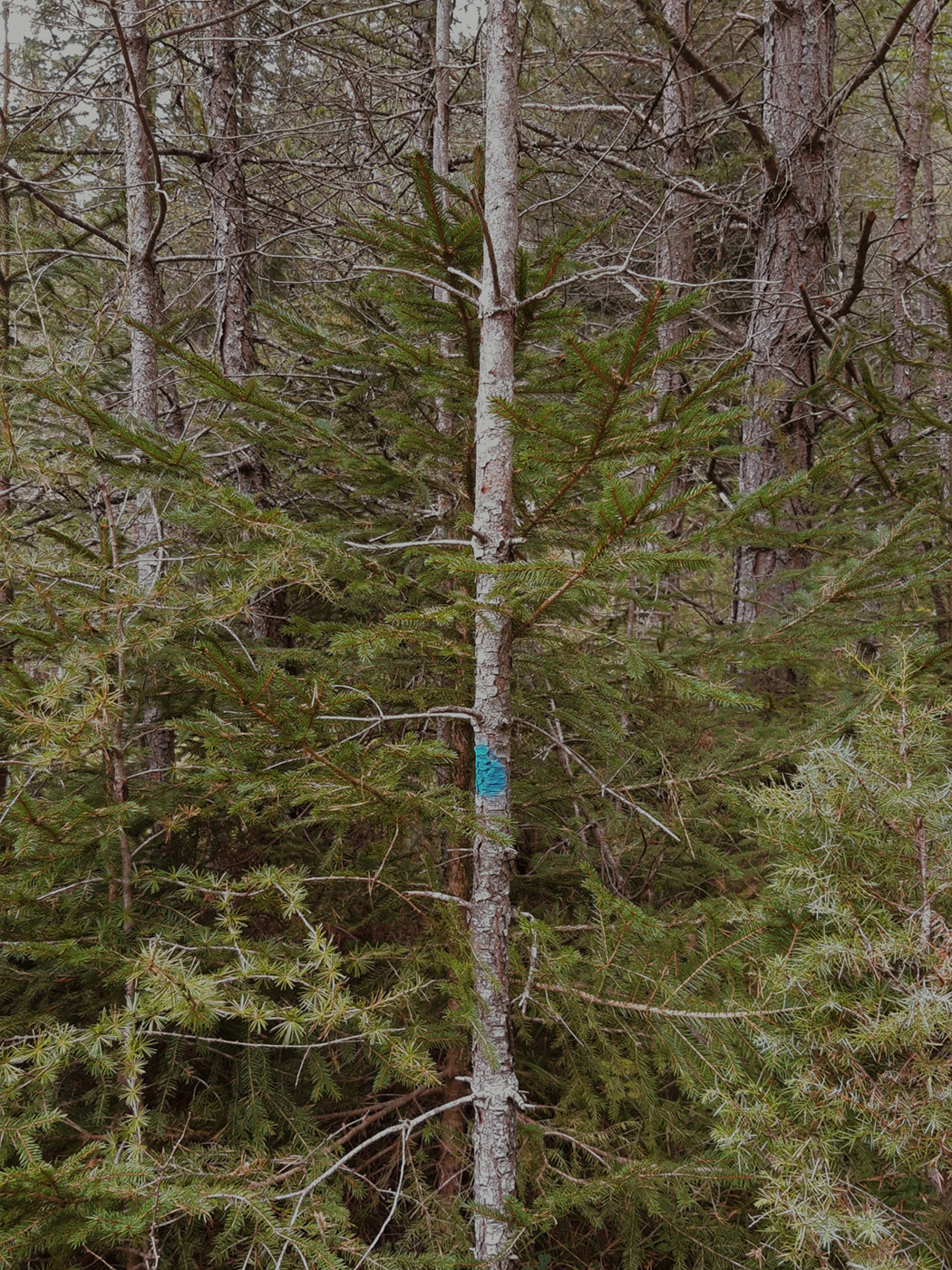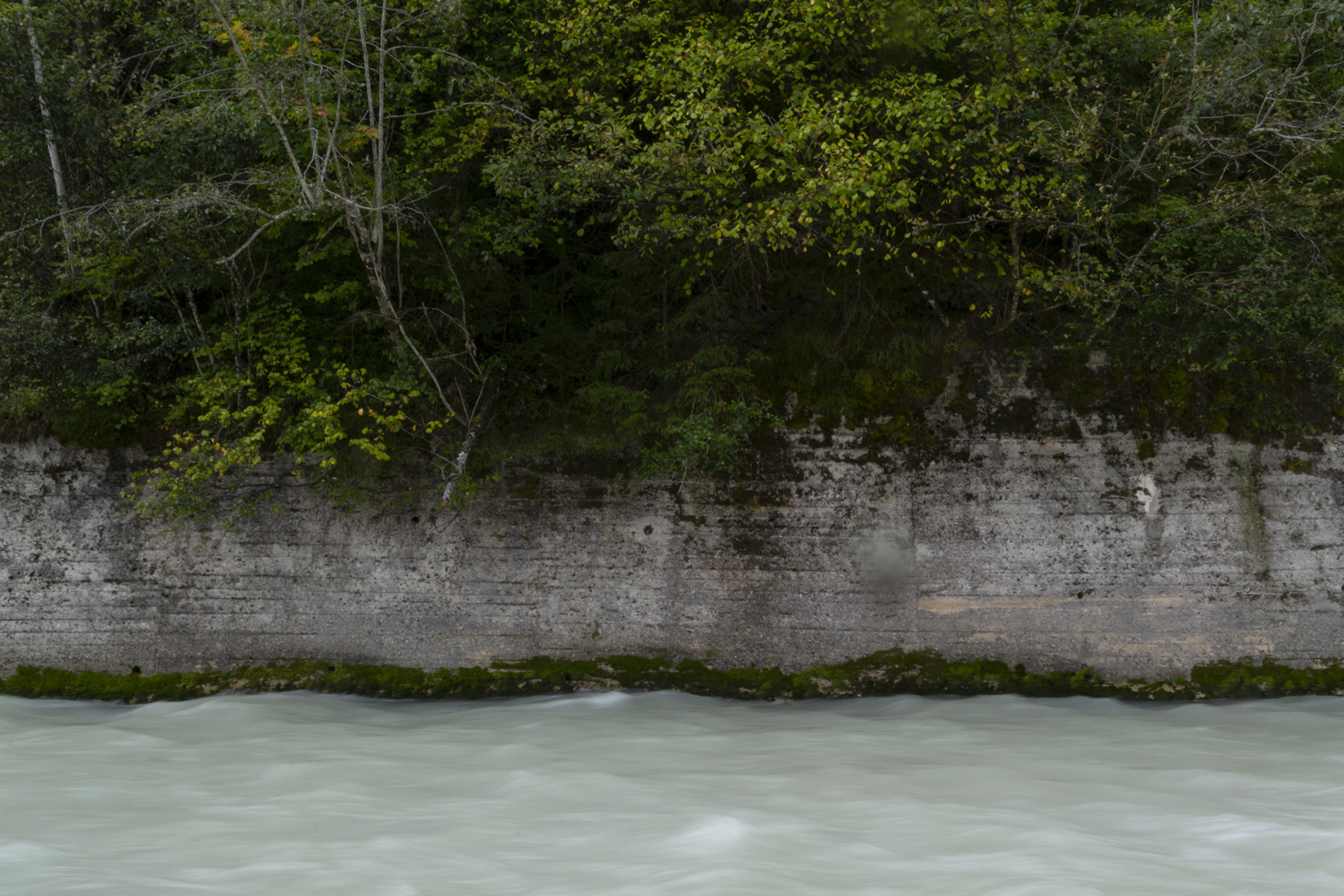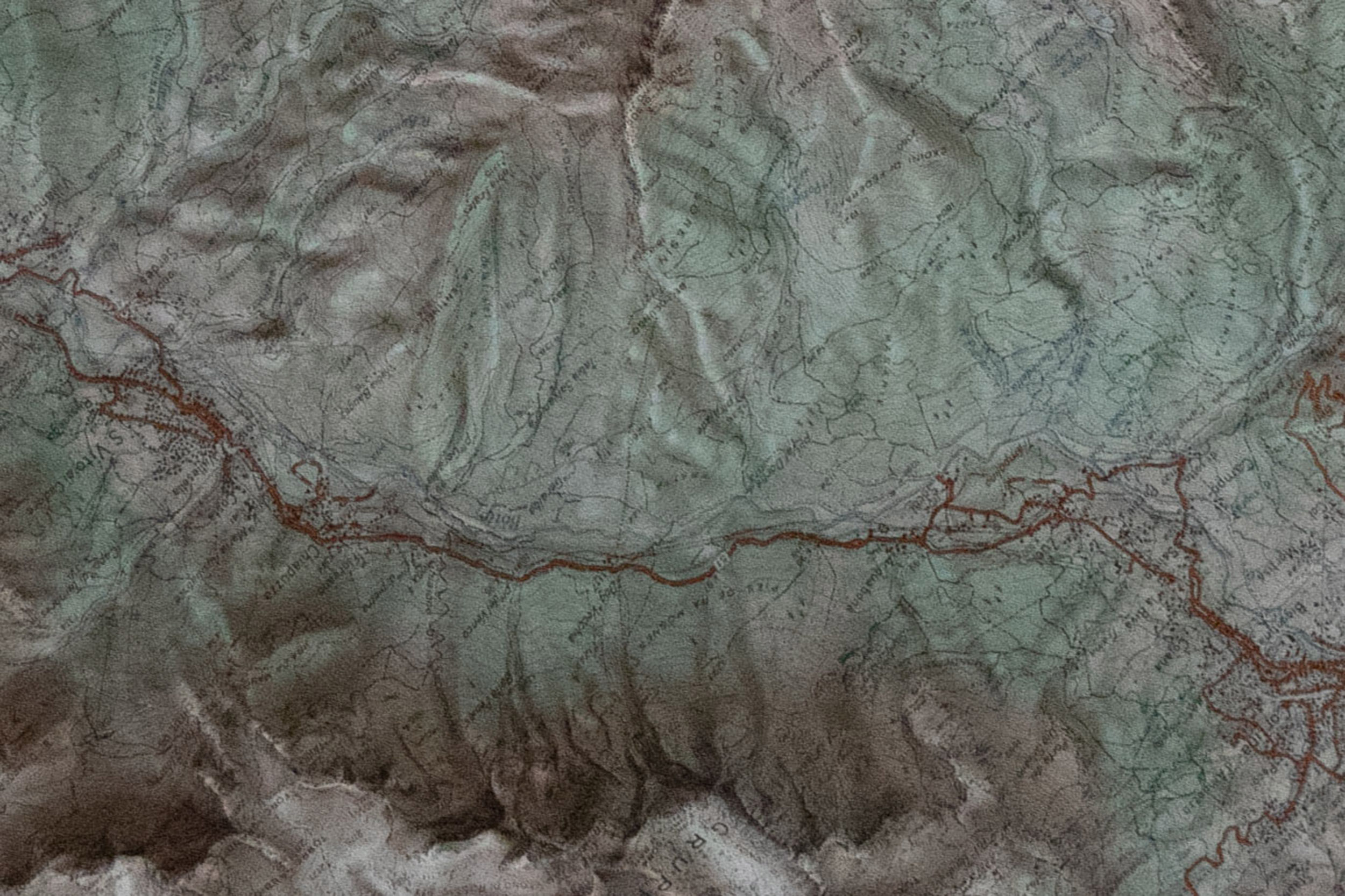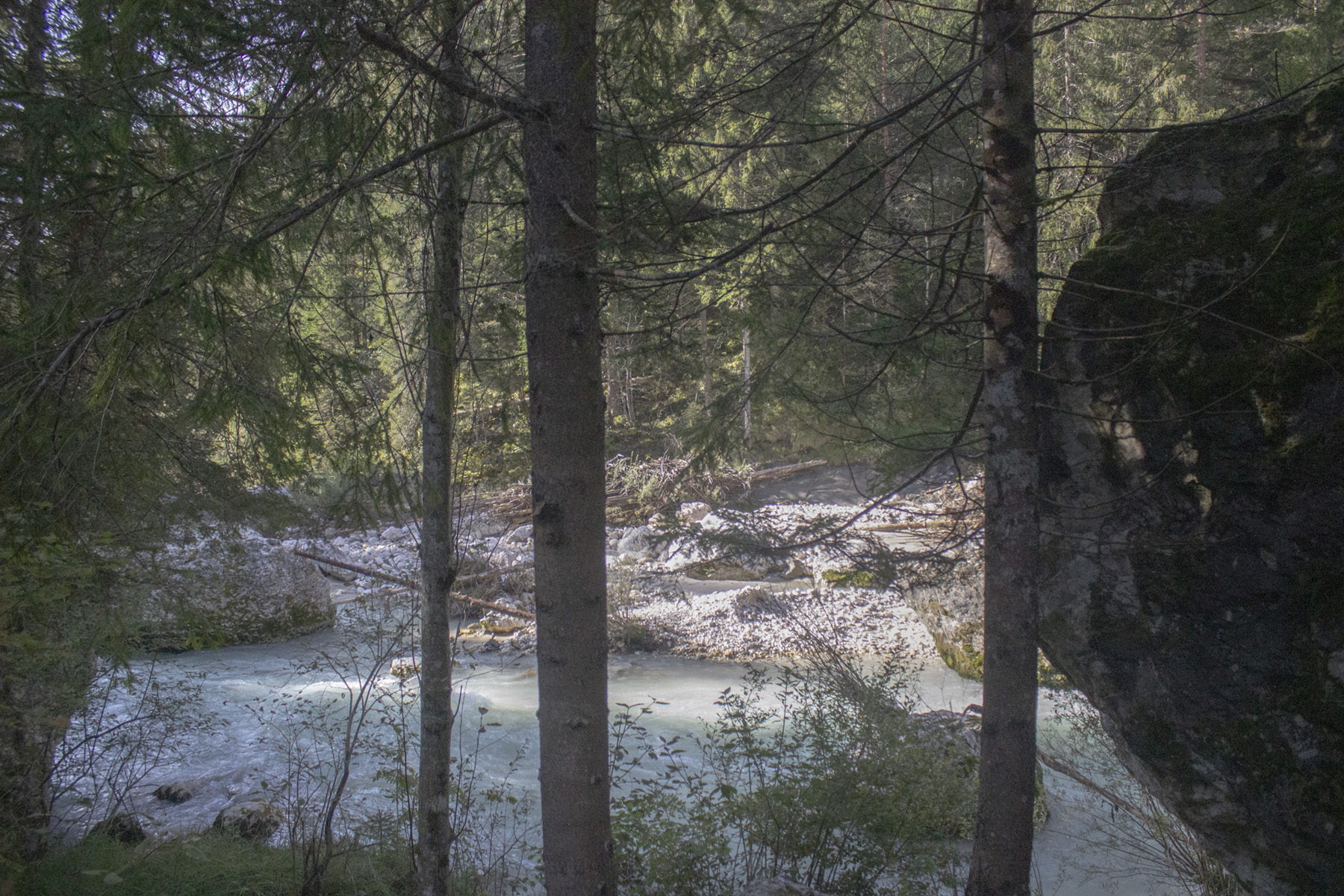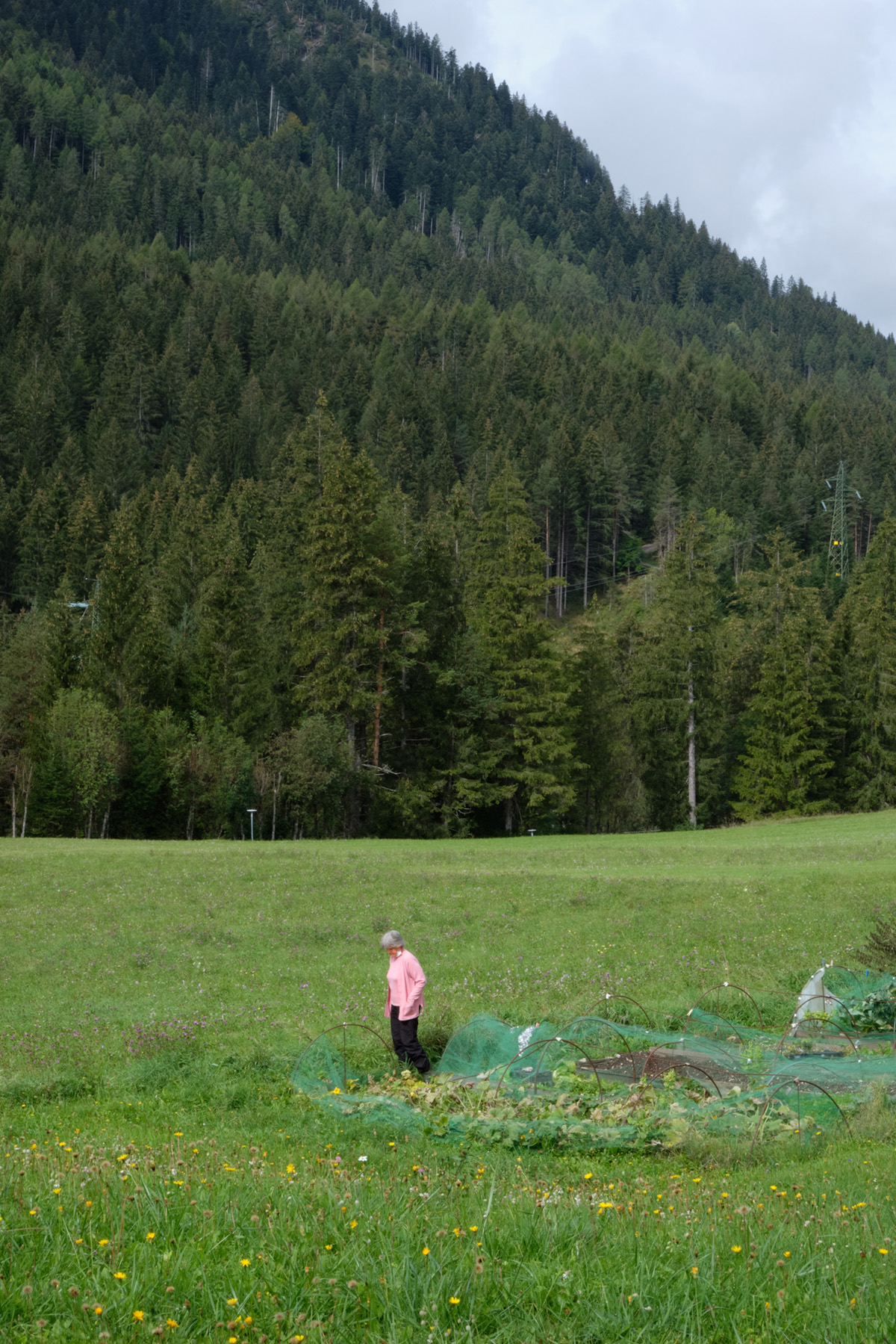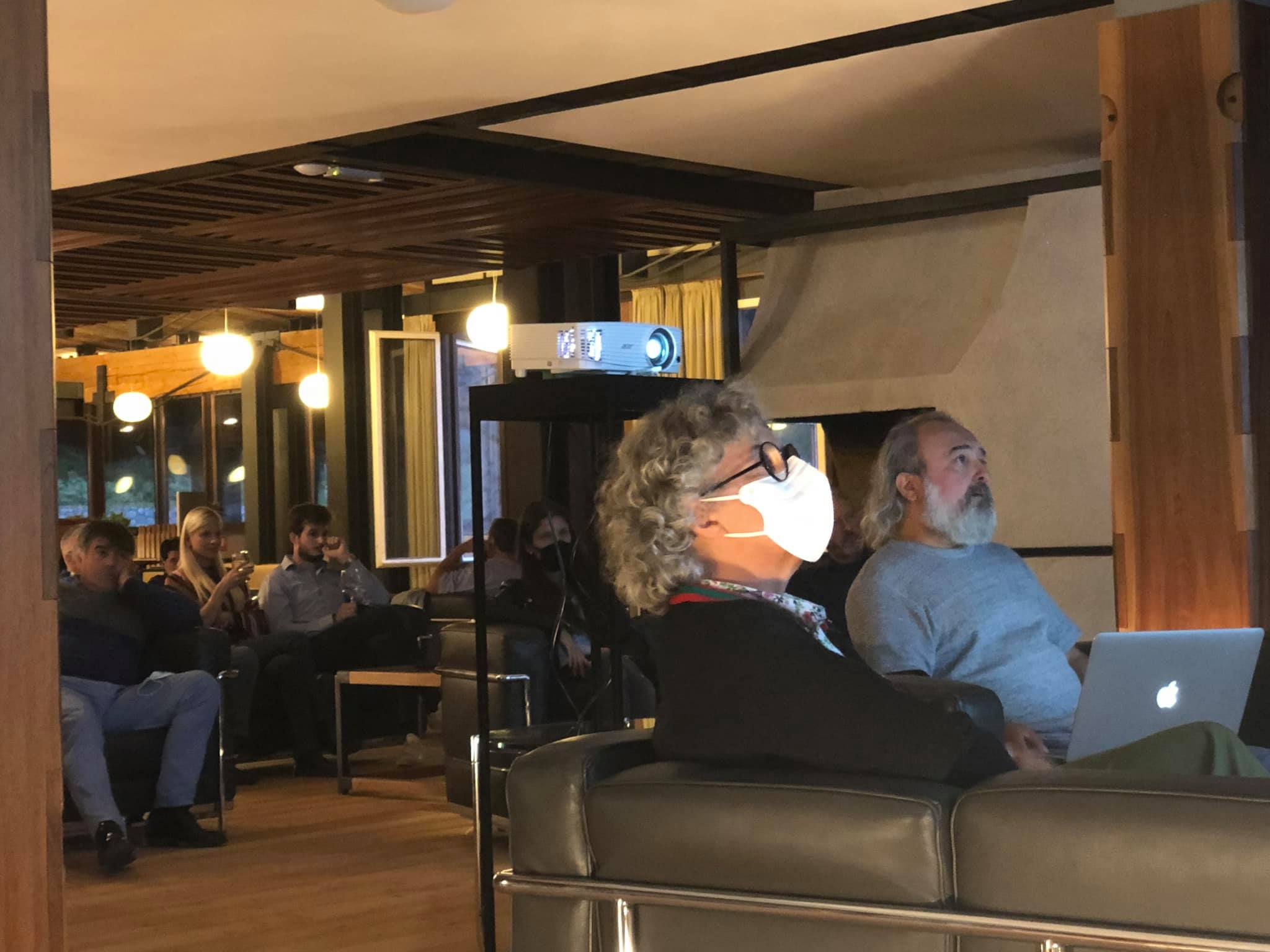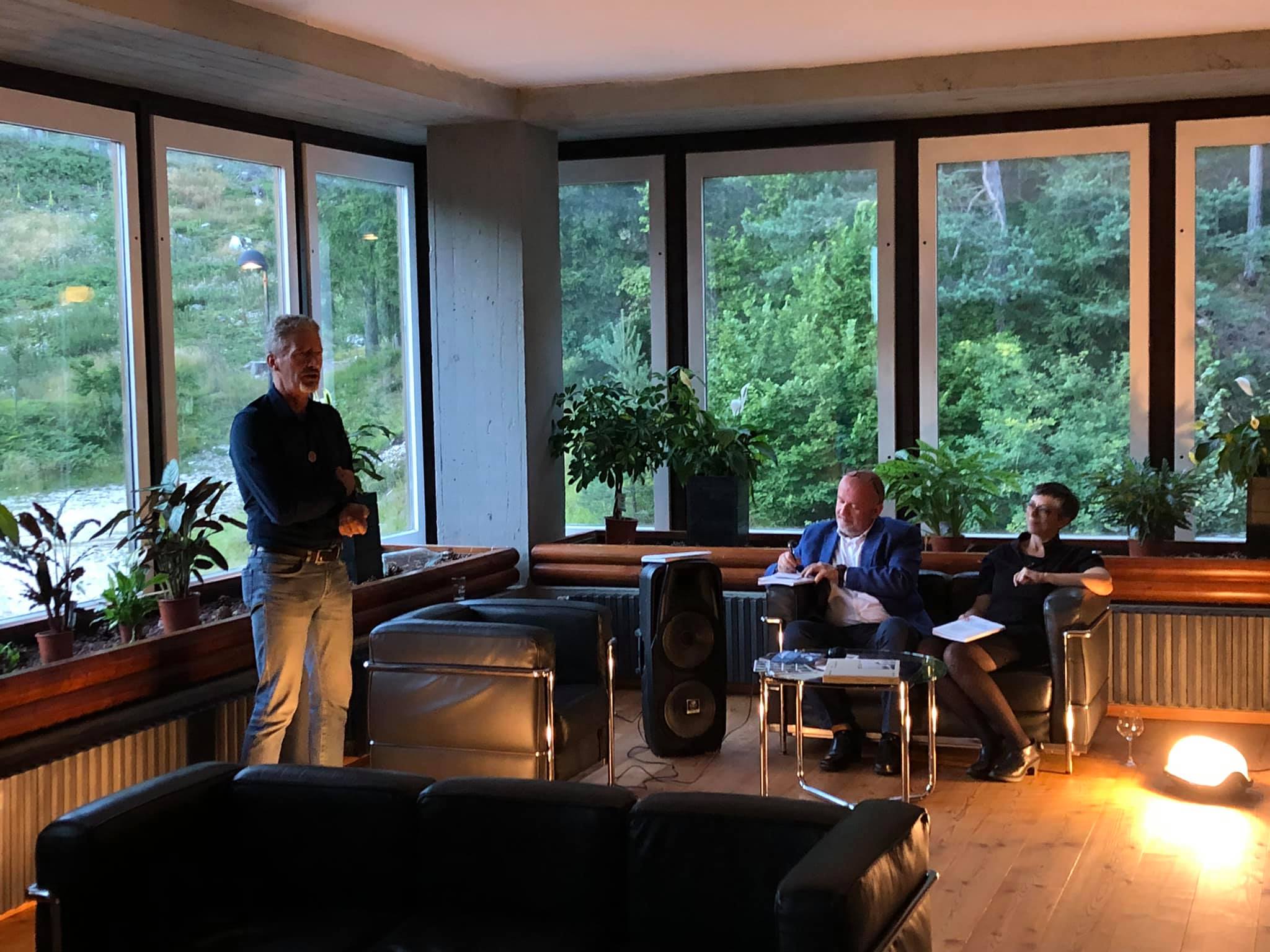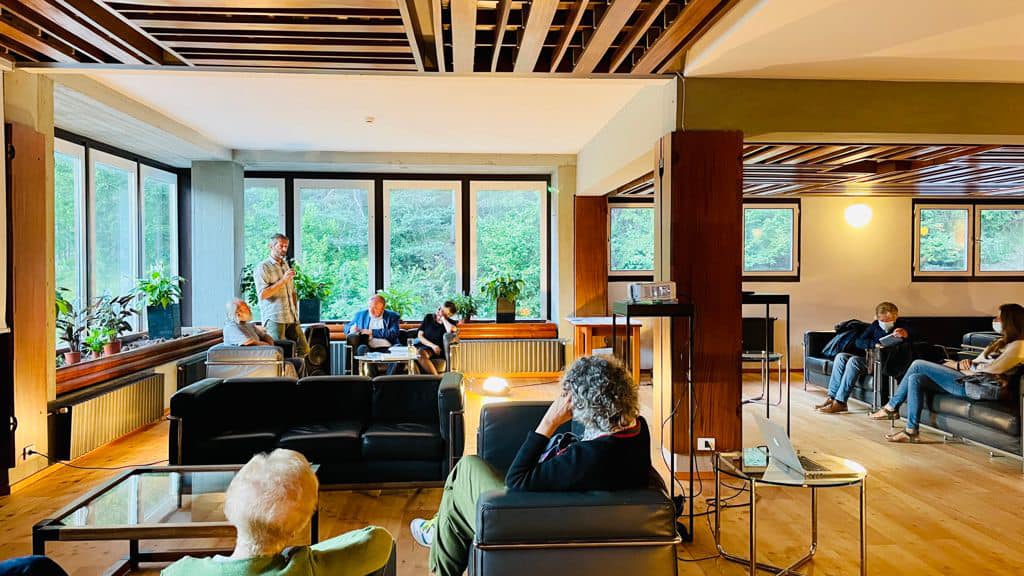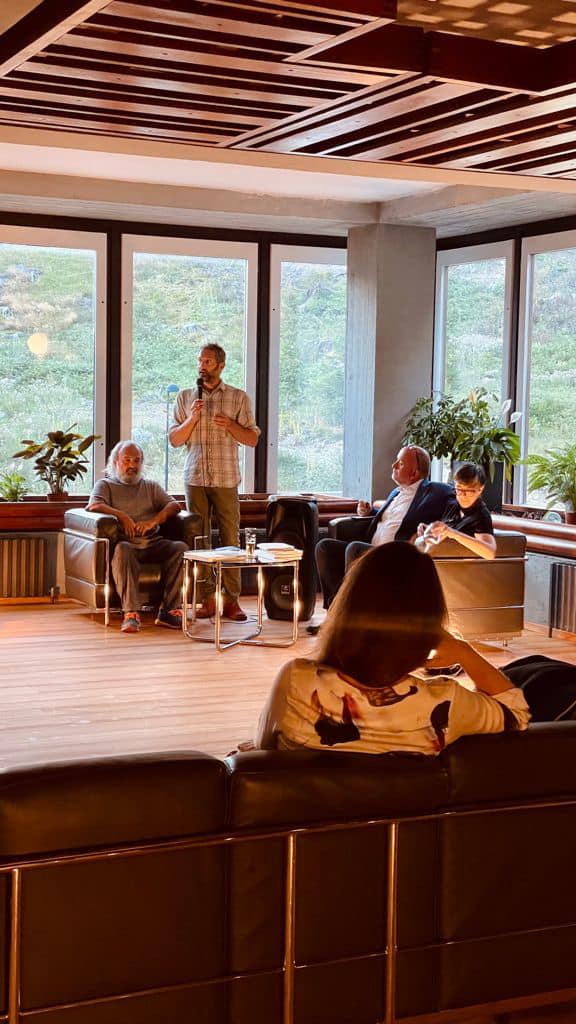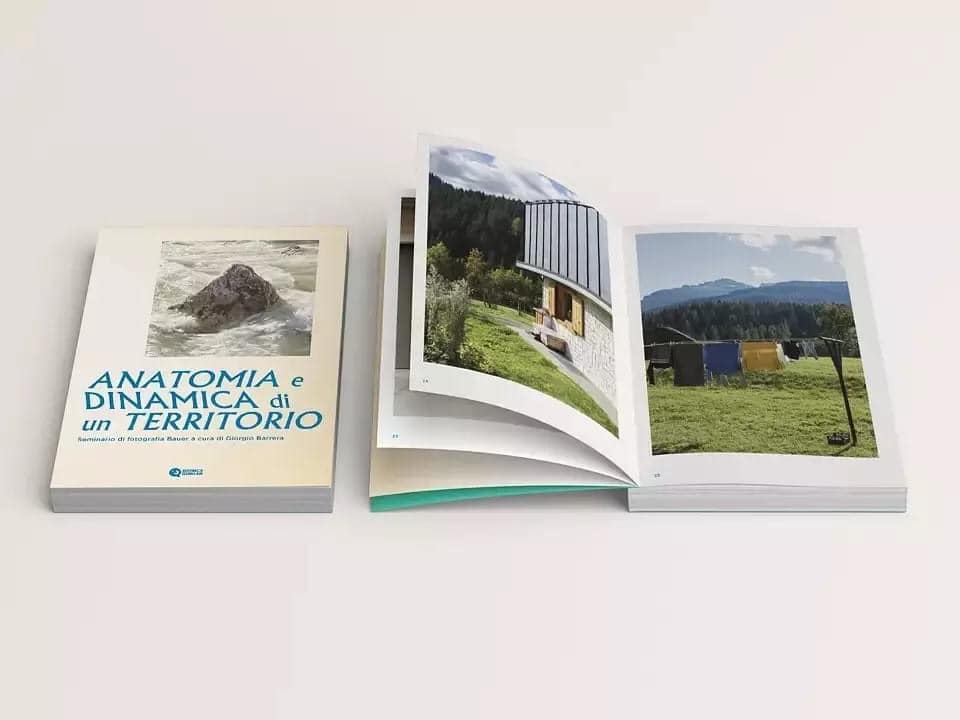
La fotografia in home page è di Enrico Caruso, quella di copertina è di Nicole Ganzetti
Il paesaggio è di fatto un concetto, un concetto particolare perché da un lato è un’invenzione umana che discende dalla raffigurazione dell’ambiente naturale, dall’altro pur essendo un’astrazione si riferisce a ciò che è ben presente e visibile nella realtà. Senza forzature possiamo quindi stabilire una similitudine: il paesaggio è una porzione di territorio, la fotografia è una porzione di reale.
The landscape is in fact a concept, a particular concept because on the one hand it is a human invention that descends from the representation of the natural environment, on the other hand, although it is an abstraction, it refers to what is well present and visible in reality. Without forcing we can therefore establish a similarity: the landscape is a portion of the territory, photography is a portion of reality.
Anatomia e dinamica di un territorio è un progetto di formazione e ricerca degli studenti-fotografi del Bauer di Milano da me condotto. Interesserà la Valle del Boite (BL) fino al 2026 con la finalità di realizzare uno studio del paesaggio fisico, culturale, sociale e umano, in trasformazione. Infatti, in occasione delle Olimpiadi invernali di Milano-Cortina 2026, questo territorio cadorino attraversato dalla Statale di Alemagna sarà interessato da una serie di interventi infrastrutturali. Concepito come un lavoro collettivo e condiviso capace di generare relazioni e mostrare l’identità dei luoghi, il progetto si inserisce in un più ampio contesto multidisciplinare di valorizzazione e rigenerazione urbana, artistico, culturale e scientifico e ha come partner territoriali, Afol Metropolitana, il Comune di San Vito di Cadore, Dolomiti Contemporanee e il Dipartimento TeSAF dell’Università di Padova.
Anatomy and dynamics of a territory is a training and research project of the student-photographers of the Bauer Photography School in Milan that I conduct. It will involve the Valle del Boite (BL) until 2026 with the aim of carrying out a study of the physical, cultural, social and human landscape, in transformation. In fact, on the occasion of the Milan-Cortina 2026 Winter Olympics, this Cadore area crossed by the Alemagna state road will be affected by a series of infrastructural interventions. Conceived as a collective and shared work capable of generating relationships and showing the identity of places, the project is part of a broader multidisciplinary context of urban, artistic, cultural and scientific enhancement and regeneration and has as territorial partners, Afol Metropolitana, the Municipality of San Vito di Cadore, Dolomiti Contemporanee and the TeSAF Department of the University of Padua.
“Da molti anni gli studenti del Bauer sperimentano progetti di lettura del territorio sotto la guida di fotografi noti per la loro esperienza in questo campo. La scuola ha inoltre sviluppato negli anni una nutrita serie di seminari con importanti fotografi di paesaggio, ritenendo interessante e di alto valore educativo portare gli studenti a produrre immagini sullo stato di un paesaggio, quello della nostra contemporaneità, divenuto molto complesso e stratificato, segnato nel tempo prima dall’economia agricola, poi dallo sviluppo industriale e infine dai successivi mutamenti postindustriali fino alla globalizzazione. Negli anni, intere classi o gruppi di studenti hanno dunque lavorato e talvolta vissuto in residenza, per esempio, con Vittore Fossati, Francesco Radino, Luca Andreoni, Jean-Louis Garnell, Giampietro Agostini e Gabriele Basilico”. (Roberta Valtorta, Anatomia e dinamica di un territorio, Editrice Quinlan, 2021).
“For many years the students of Bauer have been experimenting projects of reading the territory under the guidance of photographers known for their experience in this field. The school has also developed over the years a large series of seminars with important landscape photographers, considering it interesting and of high educational value to lead students to produce images on the state of a landscape, that of our contemporaneity, which has become very complex and stratified, marked in the first from the agricultural economy, then from industrial development and finally from subsequent post-industrial changes up to globalization. Over the years, entire classes or groups of students have therefore worked and sometimes lived in residence, for example, with Vittore Fossati, Francesco Radino, Luca Andreoni, Jean-Louis Garnell, Giampietro Agostini and Gabriele Basilico ”. (Roberta Valtorta, Anatomy and dynamics of a territory, Editrice Quinlan, 2021).
Paesaggio significa luogo di creazione. La creatività è una qualità delle attività umane che nel passato è stata messa in stretta e quasi esclusiva relazione alla pratica artistica. Nel suo senso più bello e ampio la creatività è una capacità umana cognitiva, logica e fantasiosa; e fantasia è un sostantivo dai diversi risvolti che qui esprime il suo significato più aulico, cioè quello di libera inventiva, di potenza immaginativa. In questa direzione il carattere soggettivo dell’esperienza di ciascun studente è perciò fondamentale. Tanti occhi, sguardi, visioni, ritagli di territorio. Il paesaggio di cui si tratta non è ovviamente solo quello naturalistico perché Anatomia e dinamica di un territorio è un progetto pluriennale che si basa “sull’osservazione totale, a largo raggio, senza gerarchie né di importanza né di valore estetico tra i diversi soggetti (il paesaggio va guardato in tutta la sua complessità, nelle relazioni, negli intrecci)” – (Roberta Valtorta) e che, attraverso la sua naturale disposizione verso la socialità, gli abitanti e i fruitori, partecipa e invoglia a conoscere e vivere il territorio.
Succederà infatti che “centinaia di studenti, nei prossimi anni, potranno avvicendarsi, portando un contributo scientifico e visivo alla conoscenza del territorio sviluppando uno studio organico e dinamico” (Gianluca D’Incà Levis)
L’attenzione, la cura e l’osservazione che il territorio riceve dalle fotografie prolungano e svelano le sue dinamiche. “L’osservazione di e da diverse prospettive rappresenta uno strumento essenziale per suggerire le giuste azioni di tutela e di gestione delle risorse naturali e del paesaggio.” (Prof. Tommaso Anfodillo)
Infatti i seminari, che potranno “assumere un valore di complemento culturale e strategico nell’indagine sulle modificazioni di questi luoghi in trasformazione, oltre che strumento tecnico, sono un dispositivo integrato che costituisce di certo un’opportunità di arricchimento per le persone, come sempre accade quando si crea confronto. E’ infatti con la costruzione di relazioni in primis, tra le cose e le persone, tra persone ed altre persone, che le terre e gli uomini assumono e accrescono valore.”(Gianluca D’Incà Levis)
“Con sguardo aperto alle altre prospettive, senza preconcetti, per capire gli stati, le trasformazioni, i processi. Alla fine dell’ambizioso progetto di riproporre questa iniziativa per i prossimi 5-6 anni avremo una ricca biblioteca di emozioni utile alle comunità per progettare con maggiore consapevolezza il futuro.” (Roberta Valtorta)
English text below
Landscape means place of creation. Creativity is a quality of human activities that in the past has been closely and almost exclusively related to artistic practice. In its most beautiful and broadest sense, creativity is a cognitive, logical and imaginative human capacity; and fantasia is a noun with various implications which here expresses its most noble meaning, that is, that of free inventiveness, of imaginative power. In this direction, the subjective nature of each student’s experience is therefore fundamental. Many eyes, glances, visions, patches of territory. The landscape in question is obviously not only the naturalistic one because Anatomy and dynamics of a territory is a multi-year project that is based “on total, wide-ranging observation, without hierarchies of importance or aesthetic value between the different subjects ( the landscape must be looked at in all its complexity, in the relationships, in the intertwining) “- (Roberta Valtorta) and that, through its natural disposition towards sociality, the inhabitants and the users, participates and invites to know and experience the territory.
In fact, it will happen that “hundreds of students, in the coming years, will be able to alternate, bringing a scientific and visual contribution to the knowledge of the territory by developing an organic and dynamic study” (Gianluca D’Incà Levis).
The attention, care and observation that the territory receives from the photographs prolong and reveal its dynamics. “Observation of and from different perspectives is an essential tool for suggesting the right actions for the protection and management of natural resources and the landscape” (Prof. Tommaso Anfodillo).
In fact, the seminars, which can “take on the value of a cultural and strategic complement in the investigation of the modifications of these places in transformation, as well as a technical tool, are an integrated device that certainly constitutes an opportunity for enrichment for people, as always it happens when you create comparison. It is in fact with the building of relationships primarily, between things and people, between people and other people, that lands and men take on and increase value”(Gianluca D’Incà Levis).
“With an open eye to other perspectives, without preconceptions, to understand states, transformations, processes. At the end of the ambitious project to re-propose this initiative for the next 5-6 years, we will have a rich library of emotions useful for communities to plan the future with greater awareness” (Roberta Valtorta).
I campus hanno dato agli studenti una possibilità esperienziale rara che è stata da loro accolta con entusiasmo. Abbiamo creato una commistione fra ricerca artistica personale e committenza che, lo dimostra questo libro, ha dato alla luce un lavoro condiviso e collaborativo. Un lavoro che coglie questo territorio in un momento di cambiamento. La possibile realizzazione della variante ha indirizzato i lavori dei ragazzi verso l’immaginazione di scenari futuri documentando l’aspetto naturale, umano, produttivo, urbano e architettonico, tenendo bene in mente il valore identitario e relazionale che scaturisce dall’analisi di questi aspetti. Se il futuro è immaginazione e visione, il presente si fotografa nel suo divenire possibile e lo si può collegare all’attuale, alle sedimentazioni delle scelte che precedentemente la collettività ha operato.
Abbiamo detto che il paesaggio è un luogo di creazione. La creatività è una qualità delle attività umane che nel passato è stata messa in stretta e quasi esclusiva relazione alla pratica artistica. Nel suo senso più bello e ampio la creatività è una capacità che si esprime a vari livelli: cognitivo, logico e fantasioso. Fantasia è una parola dai diversi risvolti che qui viene usata nel suo significato più aulico che è quello di libera inventiva, di potenza immaginativa. In questo senso il carattere soggettivo dell’esperienza è fondamentale sia per lo studente sia per l’analisi del territorio. Il risultato è un corpus di immagini, un insieme organico di paesaggi che (ri)compongono un territorio in divenire, che guarda al suo futuro prossimo.
The campuses gave the students a rare experiential chance that was enthusiastically welcomed by them. We have created a mixture of personal artistic research and commissioning which, this book demonstrates, has given birth to a shared and collaborative work. A work that captures this territory in a moment of change. The possible realization of the variant directed the works of the students towards the imagination of future scenarios, documenting the natural, human, productive, urban and architectural aspect, keeping in mind the identity and relational value that arises from the analysis of these aspects. If the future is imagination and vision, the present is photographed in its possible becoming and can be linked to the present, to the sedimentation of the choices that the community has previously made.
We have said that the landscape is a place of creation. Creativity is a quality of human activities that in the past has been closely and almost exclusively related to artistic practice. In its most beautiful and broad sense, creativity is a capacity that is expressed at various levels: cognitive, logical and imaginative. Fantasy is a word with different implications that is used here in its most noble meaning which is that of free inventiveness, of imaginative power. In this sense, the subjective nature of the experience is fundamental both for the student and for the analysis of the territory. The result is a corpus of images, an organic set of landscapes that (re) compose a territory in the making, which looks to its near future.
Il lavoro collettivo che si può vedere nel libro è solo una parte del più ampio numero di immagini realizzate. Il comune di San Vito riceve quindi un quadro esperienziale del suo territorio restituito da una moltitudine di approcci. Le possibilità analitiche della documentazione fotografica e la rappresentazione del territorio sono normalmente gli aspetti più immediati della fruizione delle immagini. Nel tempo però, o dopo un’attenta analisi, ci si accorgerà che le fotografie rivelano molto di più e che le relazioni che le fotografie possono creare nella comunità sono molteplici.
Se la realizzazione di questo progetto è nata per ragioni legate alla gestione del territorio, è evidente che già l’insieme di immagini prodotte in questa prima esperienza può essere il punto di partenza per la creazione di un archivio fotografico contemporaneo della Valle del Boite.
The collective work that can be seen in the book is only a part of the larger number of images made. The municipality of San Vito therefore receives an experiential picture of its territory returned by a multitude of approaches. The analytical possibilities of photographic documentation and the representation of the territory are normally the most immediate aspects of the use of images. Over time, however, or after careful analysis, you will realize that photographs reveal much more and that the relationships that photographs can create in the community are manifold.
If the realization of this project was born for reasons related to land management, it is clear that the set of images produced in this first experience can already be the starting point for the creation of a contemporary photographic archive of the Boite Valley.
L’idea dei seminari fotografici per i corsi biennali di fotografia della scuola Bauer nasce durante il 54° Corso di Cultura in Ecologia tenutosi a San Vito di Cadore nel giugno 2018. Il convegno, a cui partecipavo, promosso dal Centro Studi per l’Ambiente Alpino – TeSAF (Dipartimento dell’Università di Padova) aveva per oggetto una serie di interventi multidisciplinari sul rapporto uomo, natura e infrastrutture, mirati allo sviluppo sostenibile e a incentivare la residenzialità.
Durante le giornate di studio ha avuto particolare attenzione e rilevanza la realizzazione di una circonvallazione per San Vito di Cadore. L’intervento infrastrutturale fa parte di una serie di modificazioni alla percorribilità della Strada Statale 51 Alemagna da approntarsi entro il 2026, anno in cui si terrà l’Olimpiade Milano-Cortina.
È nata così l’idea di realizzare una documentazione pluriennale della Valle del Boite nel territorio cadorino in trasformazione, da Pieve di Cadore fino a Cortina D’Ampezzo. Fondamentale è stata la condivisa volontà degli organizzatori di agire sinergicamente nel territorio.
Oltre a Bauer, i partner promotori e sostenitori dell’iniziativa sono il Comune di San Vito di Cadore, il TeSAF e Dolomiti Contemporanee.
L’attività del TeSAF (Territorio e Sistemi Agro-Forestali) si caratterizza per modernità e multidisciplinarietà ed è fortemente orientata allo studio scientifico, alla conservazione, alla gestione efficace e all’uso sostenibile delle risorse agricole, forestali, ambientali e a quelle connesse con le attività proprie dell’uomo, in una prospettiva culturale ecologica. Dolomiti Contemporanee è un grande centro sperimentale che opera attraverso l’arte e la cultura contemporanea, connesso organicamente all’interno del territorio alpino e di siti che costituiscono risorse potenziali da rivitalizzare, lavora perciò a favore del bene pubblico e dello sviluppo culturale dei territori.
Il titolo dato ai seminari, Anatomia e dinamica di un territorio, esplicita apertamente l’approccio condiviso per lo svolgimento del lavoro. Anatomia ben sottolinea la volontà di voler approfondire criticamente le tematiche che si svilupperanno, dinamica suggerisce l’agire, il mettersi in relazione. Percepire il cambiamento in ciò che normalmente viene considerato fisso e stabile, ovvero il territorio.
I seminari sono stati avviati nel 2020 e continueranno fino al 2026, permettono agli studenti di entrare in relazione con enti territoriali, di abituarsi a lavorare in maniera collettiva, insegnano a gestire una committenza e restituiscono al territorio un’importante archivio fotografico e, non infine, una serie di occasioni di scambio che nascono proprio grazie alla fotografia.
English text below
The idea of the photographic seminars for the two-year photography courses of the Bauer school was born during the 54th Course of Culture in Ecology held in San Vito di Cadore in June 2018. The conference, in which I participated, promoted by the Study Center for the Environment Alpino – TeSAF (Department of the University of Padua) had as its object a series of multidisciplinary interventions on the relationship between man, nature and infrastructure, aimed at sustainable development and encouraging residential care.
During the study days, the construction of a ring road for San Vito di Cadore had particular attention and relevance. The infrastructural intervention is part of a series of modifications to the practicability of the State Road 51 Alemagna to be prepared by 2026, the year in which the Milan-Cortina Olympics will be held.
Thus was born the idea of creating a multi-year documentation of the Boite Valley in the Cadore area in transformation, from Pieve di Cadore to Cortina D’Ampezzo. The shared will of the organizers to act synergistically in the territory was fundamental.
In addition to Bauer, the promoters and supporters of the initiative are the Municipality of San Vito di Cadore, TeSAF and Dolomiti Contemporanee.
The activity of TeSAF (Territory and Agro-Forestry Systems) is characterized by modernity and multidisciplinarity and is strongly oriented to the scientific study, conservation, effective management and sustainable use of agricultural, forestry, environmental resources and those connected with activities proper to man, in an ecological cultural perspective. Dolomiti Contemporanee is a large experimental center that operates through contemporary art and culture, organically connected within the Alpine territory and sites that are potential resources to be revitalized, therefore works in favor of the public good and the cultural development of the territories.
The title given to the seminars, Anatomy and dynamics of a territory, openly expresses the shared approach to carrying out the work. Anatomia well underlines the desire to critically investigate the issues that will develop, dynamics suggests acting, relating. Perceiving the change in what is normally considered fixed and stable, that is the territory.
The seminars were started in 2020 and will continue until 2026, allow students to enter into relationships with local authorities, to get used to working collectively, teach how to manage a client and return an important photographic archive to the territory and, finally, , a series of exchange opportunities that arise thanks to photography.
Immagini della presentazione del libro tenutasi il 3 settembre 2021 all’Hotel Boite presso l’ex Villaggio ENI di Corte di Cadore con Massimo Maraniello, Michela Pandolfi, Gianluca D’Incà Levis, Tommaso Anfodillo e Giorgio Barrera

